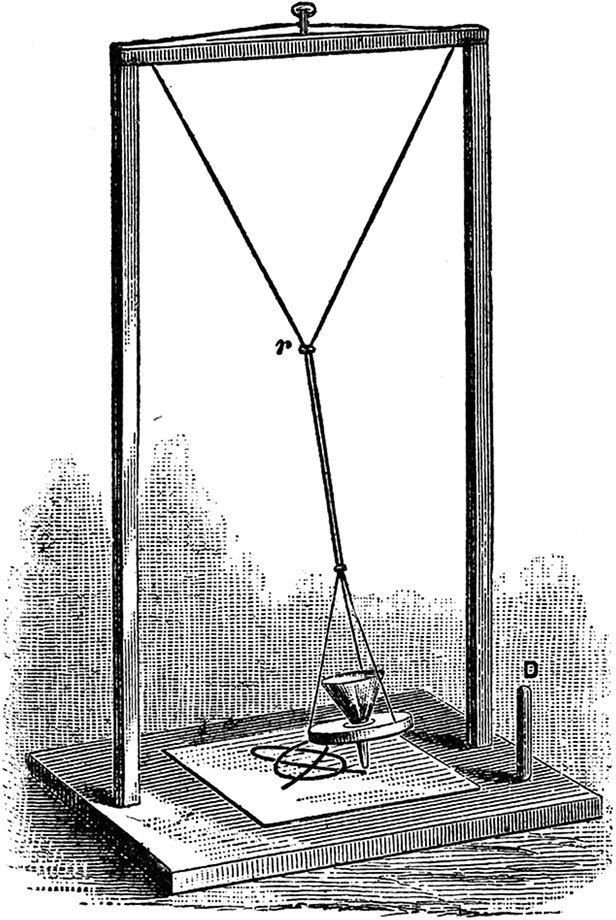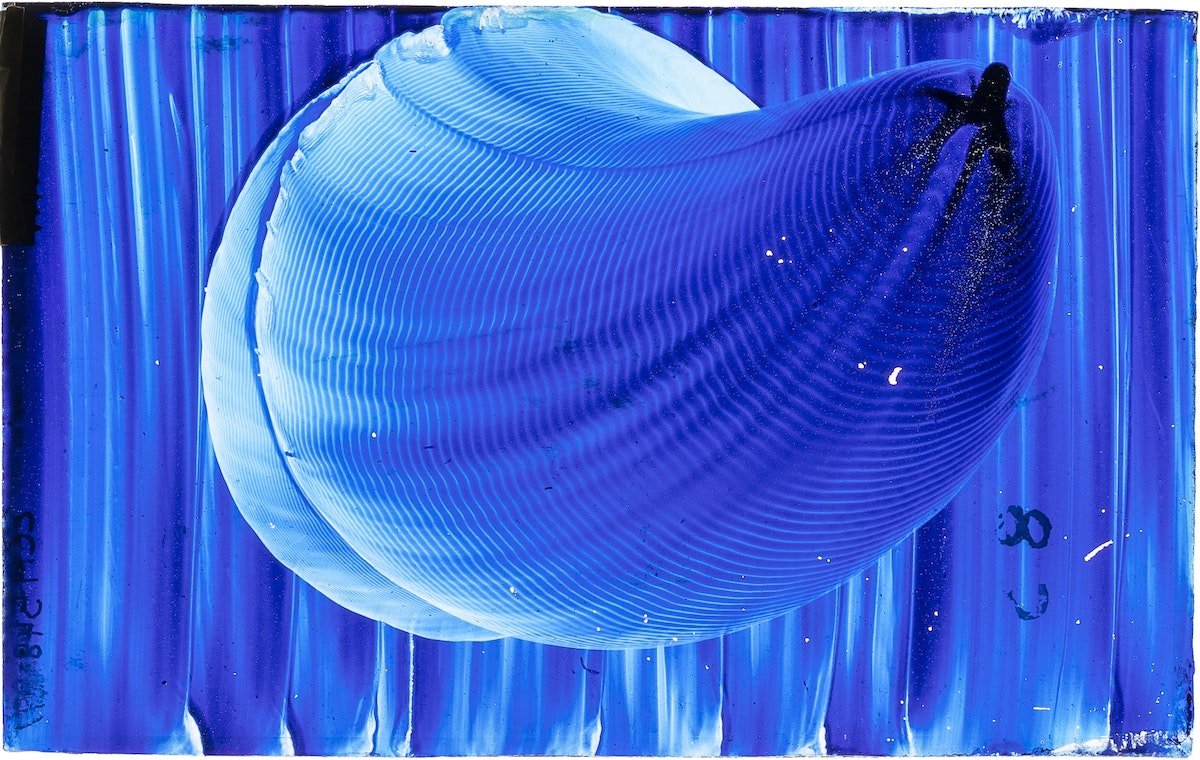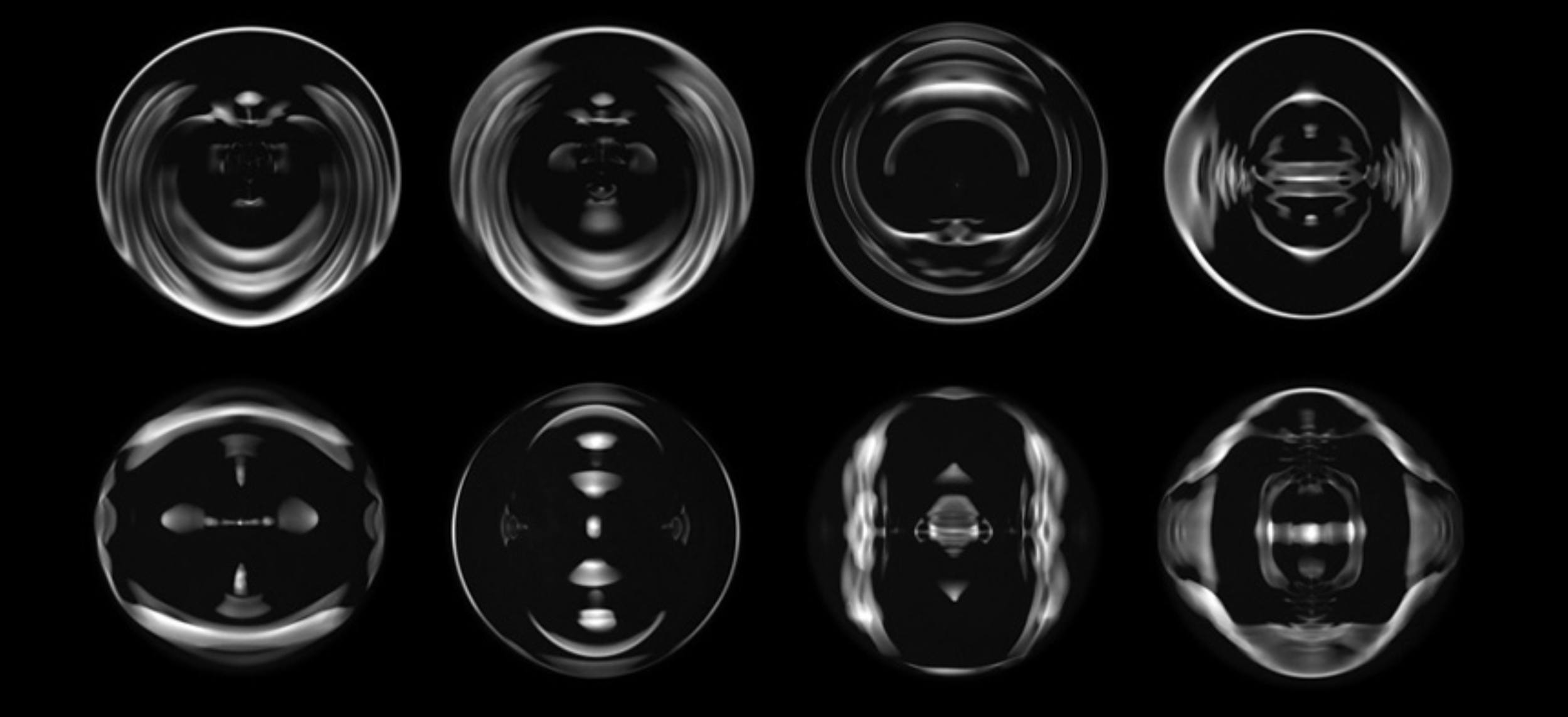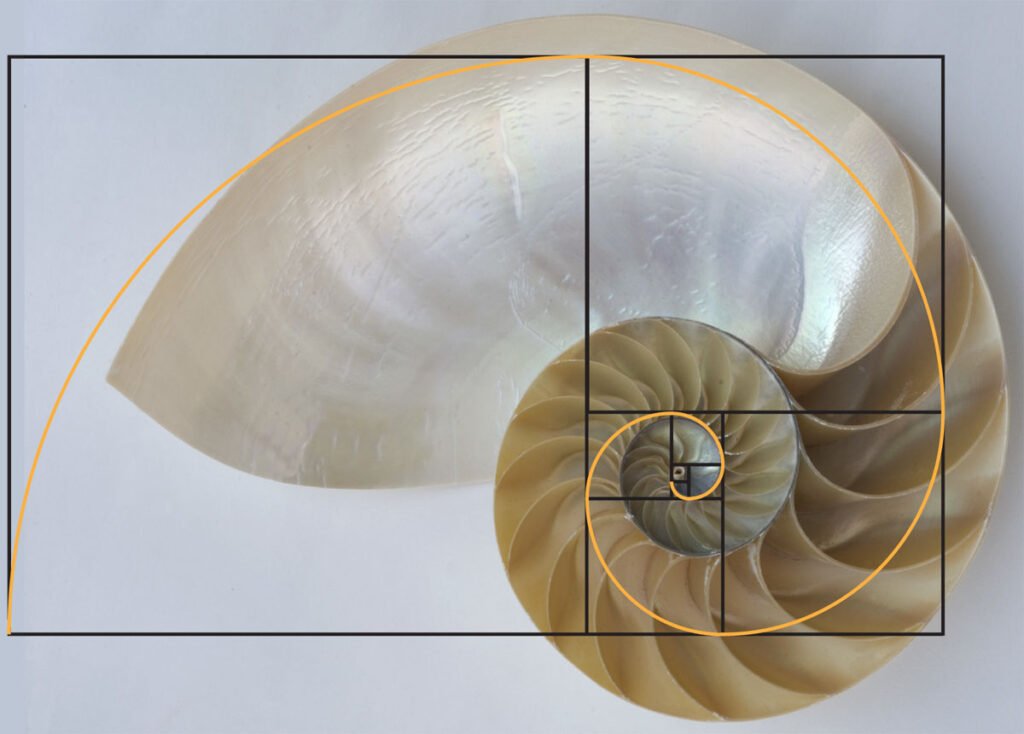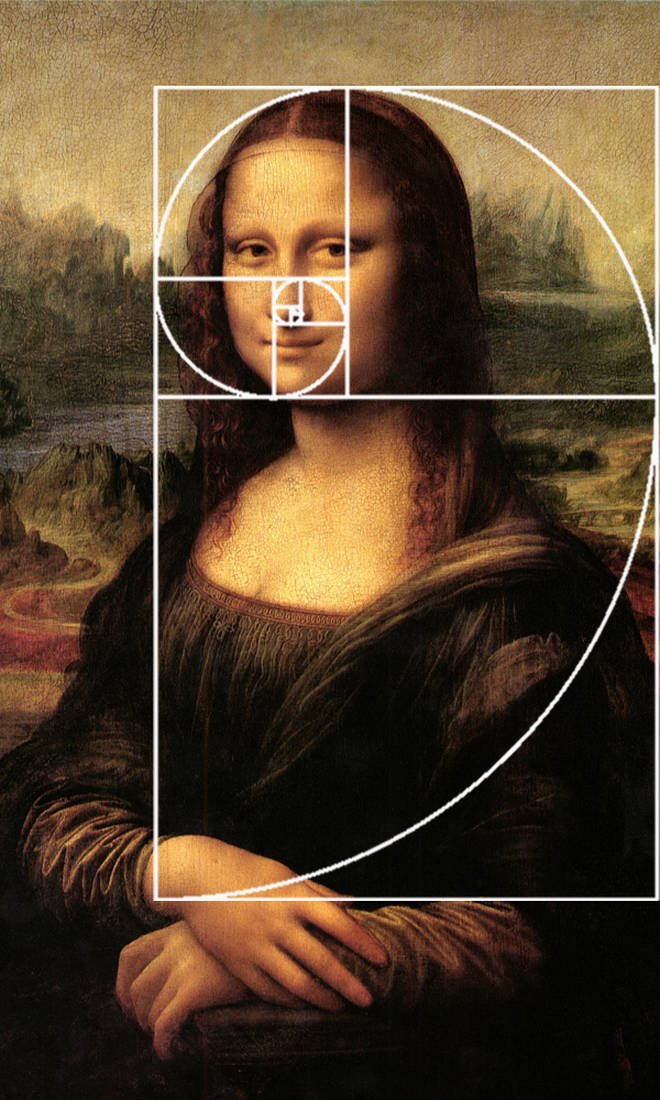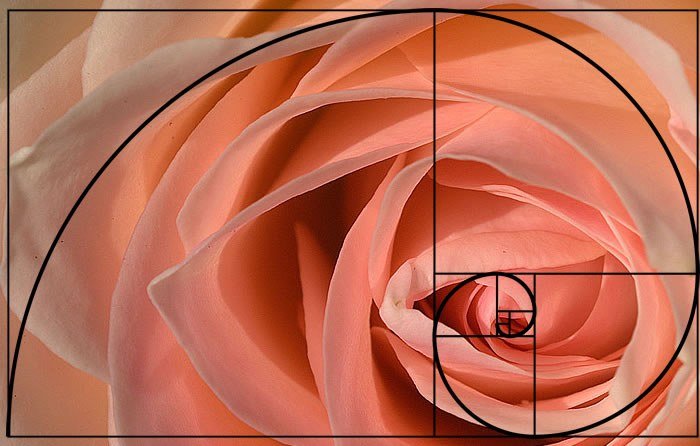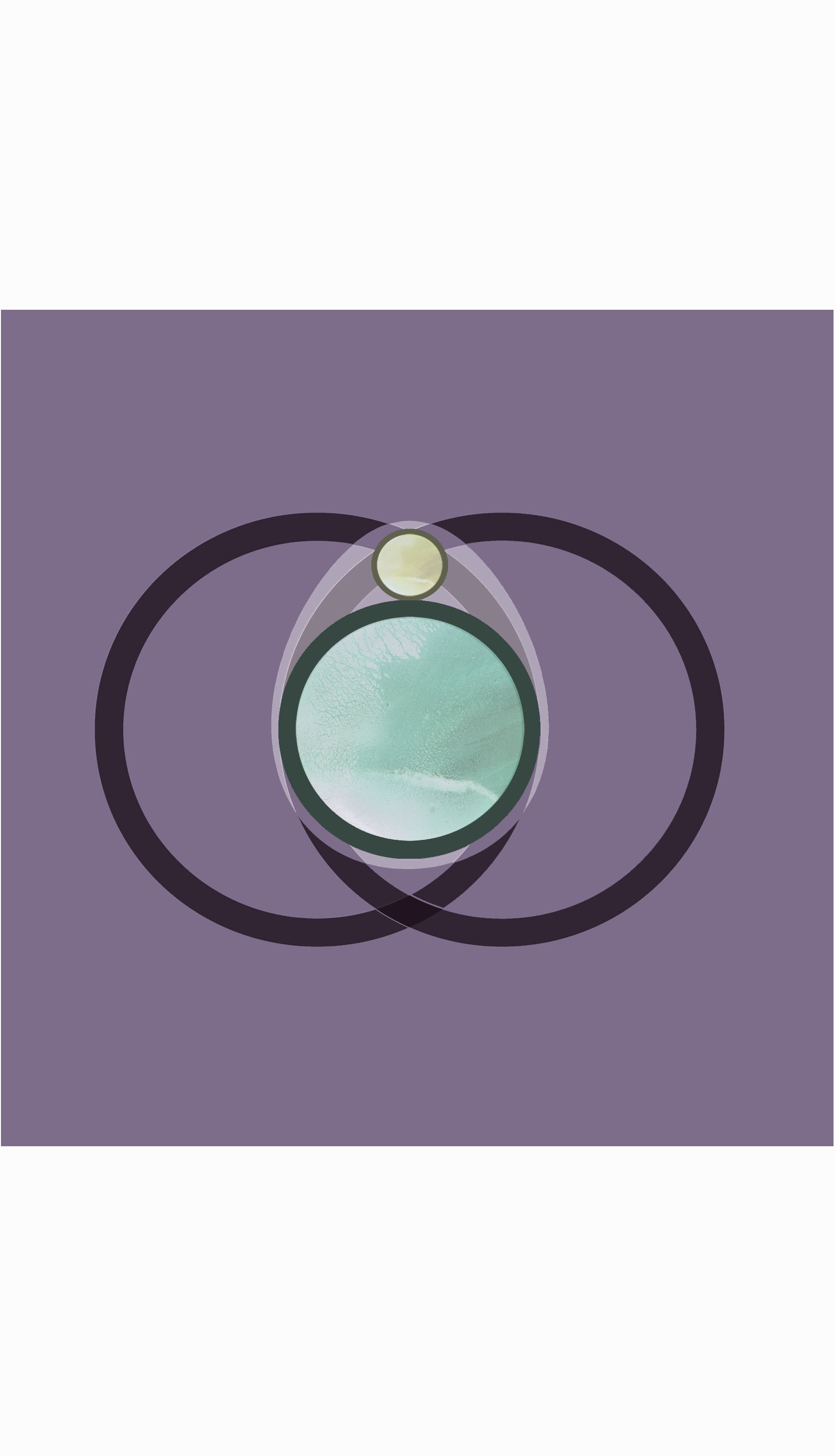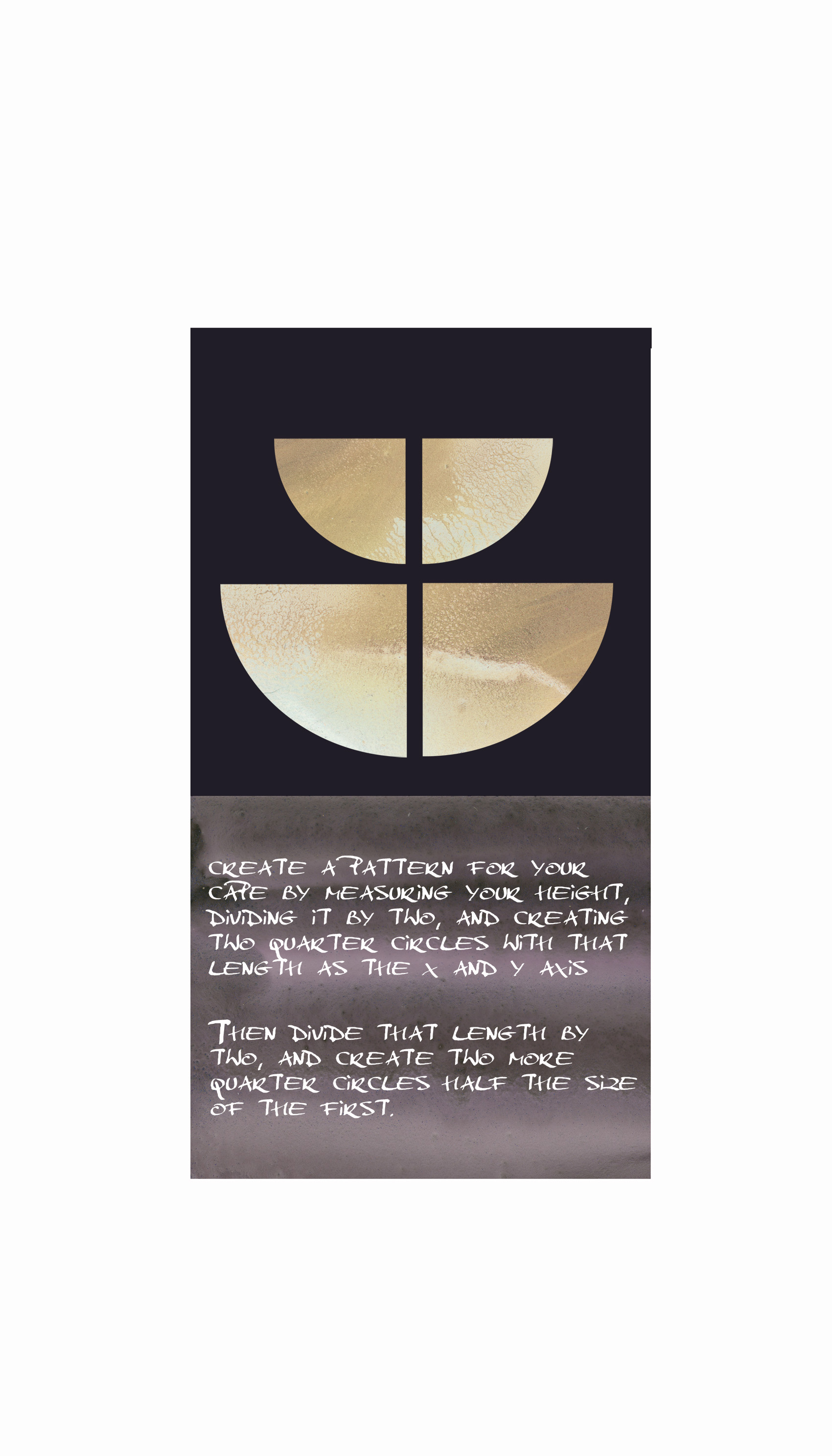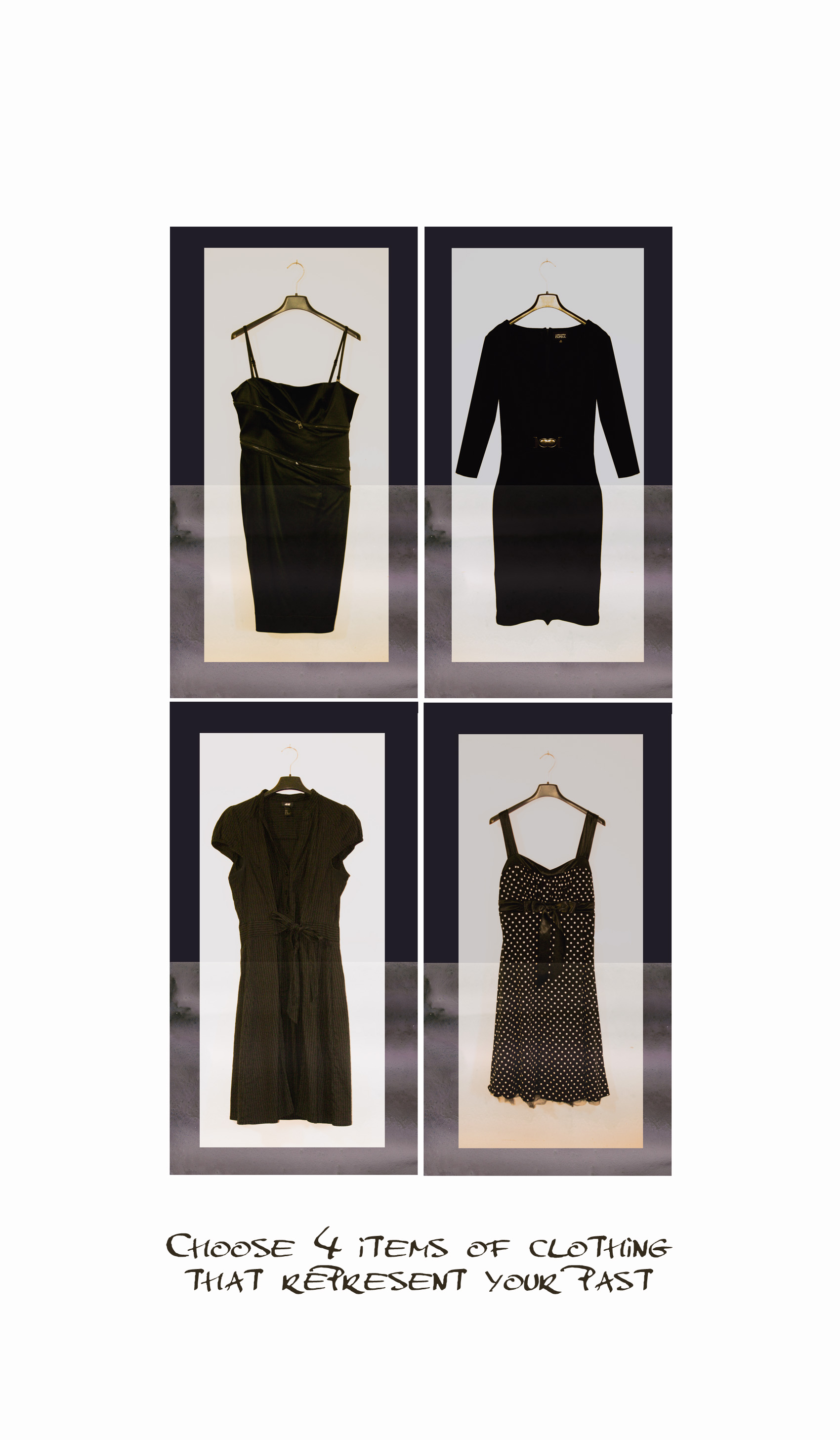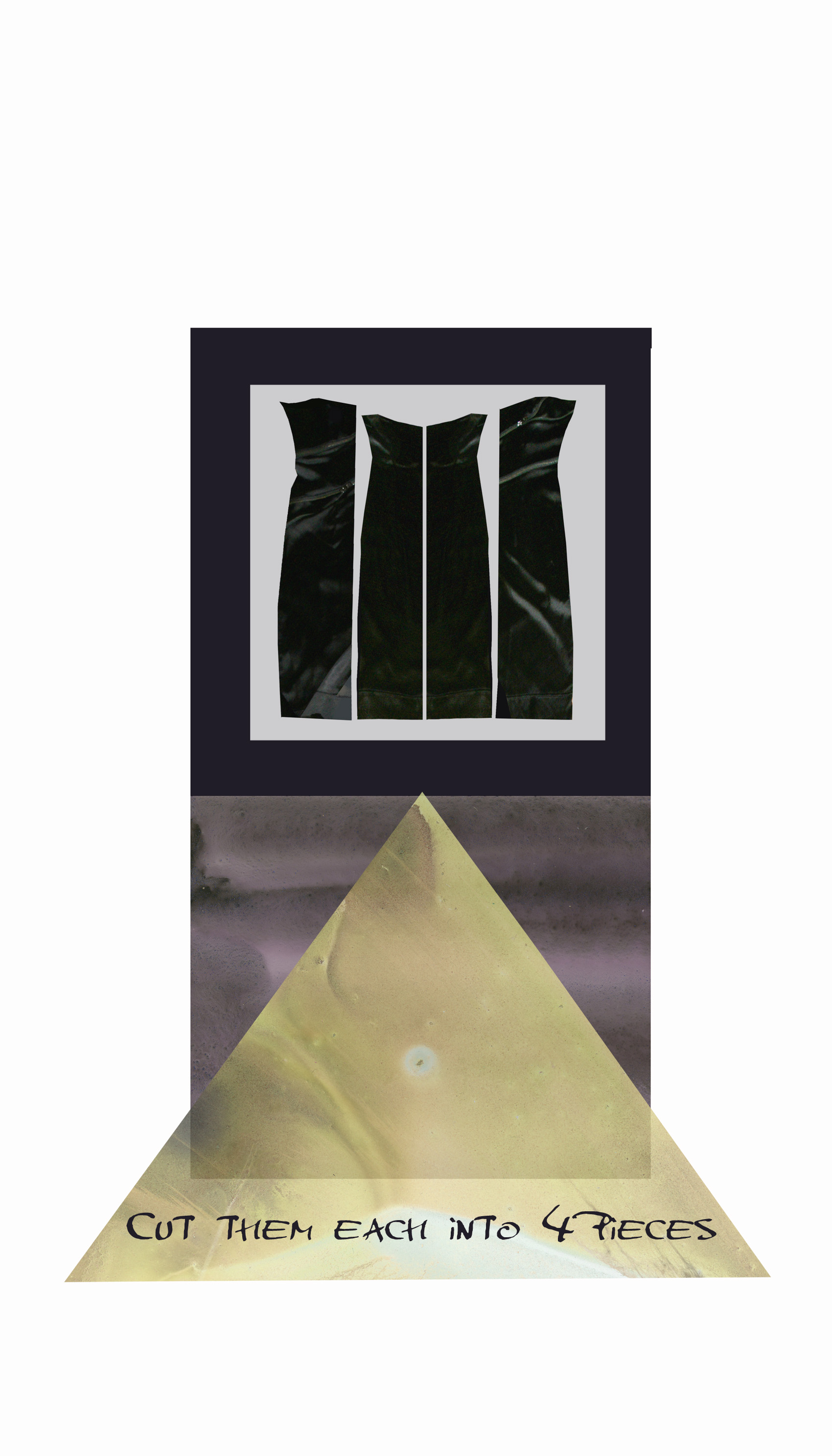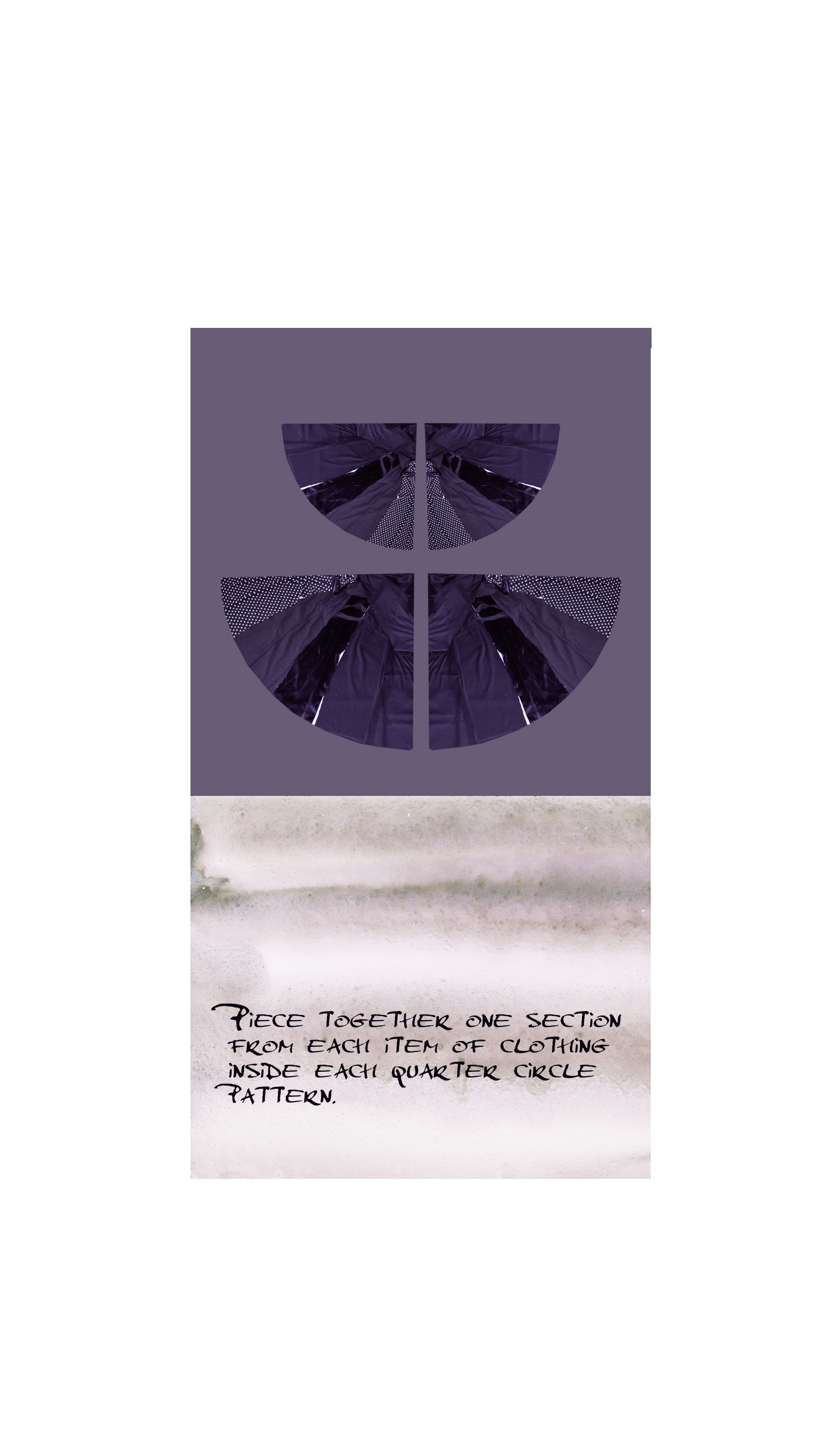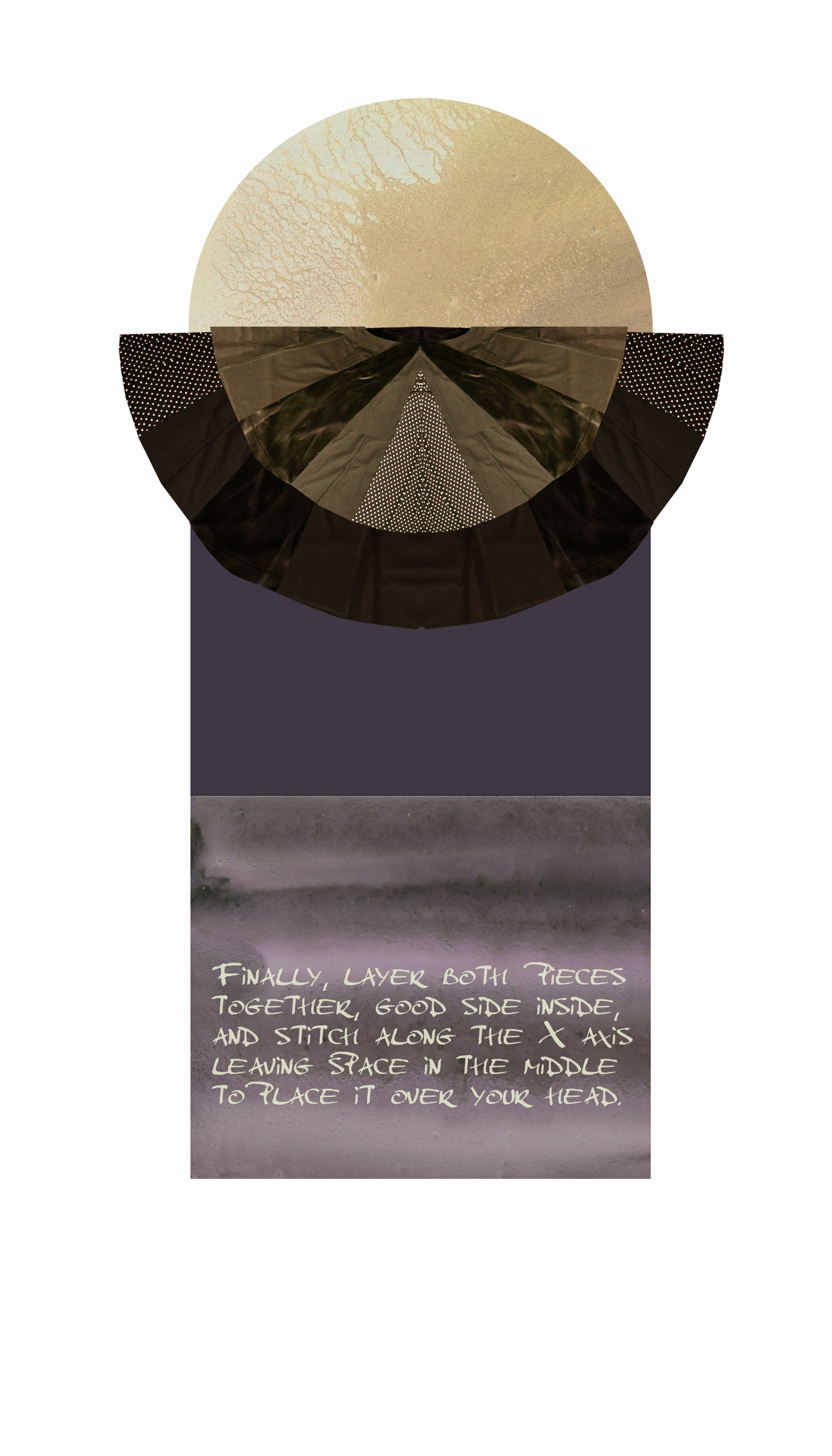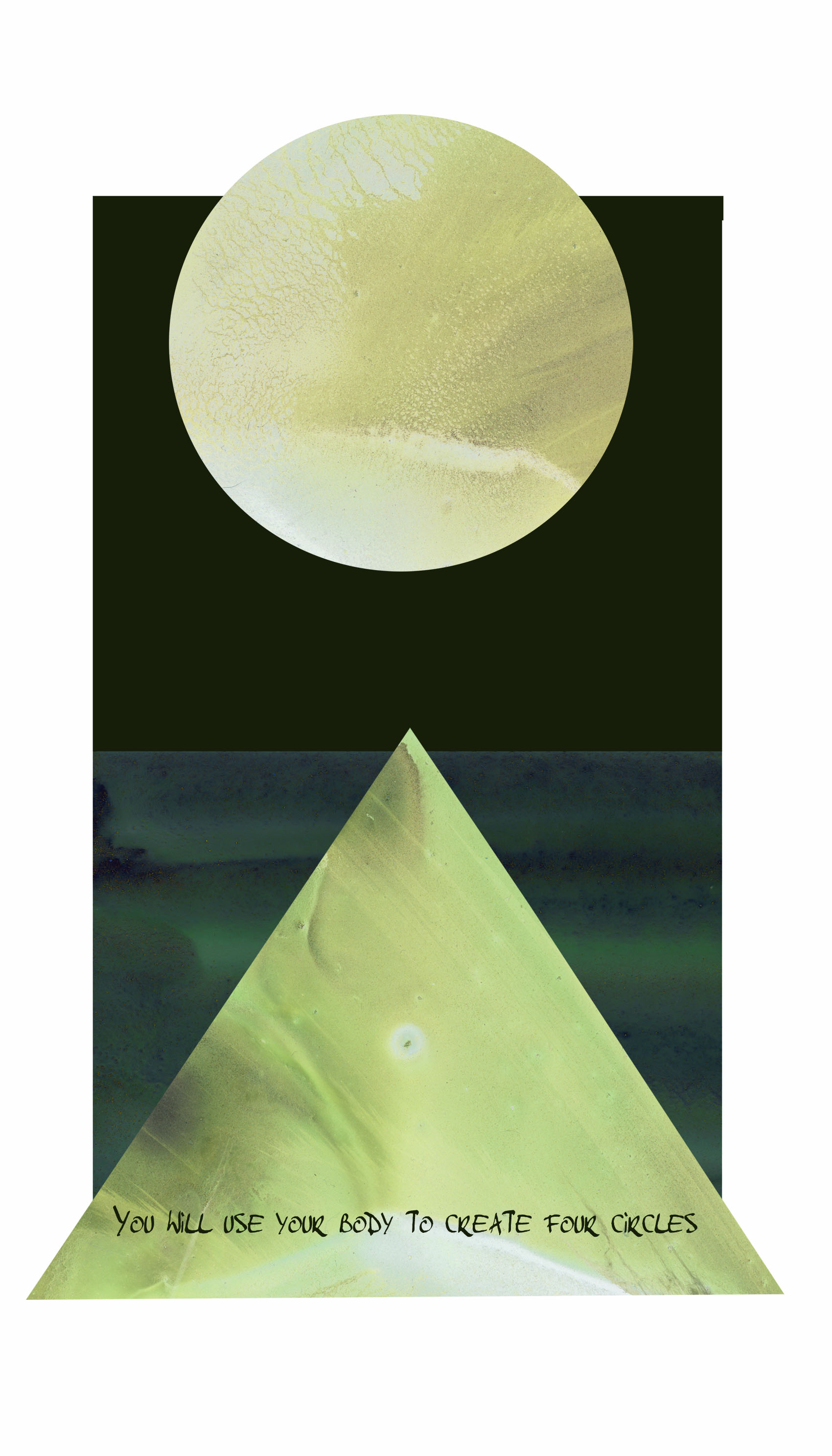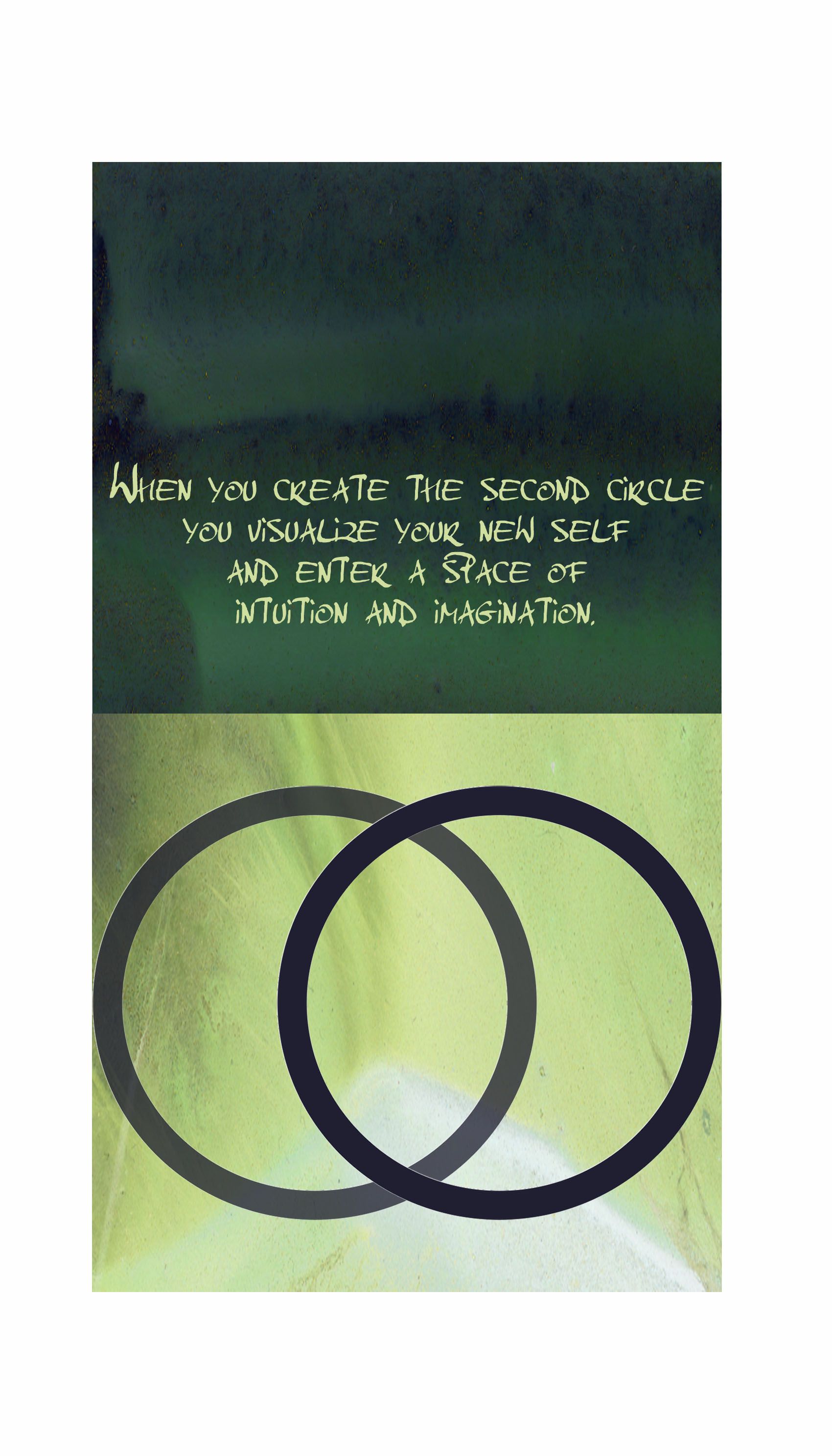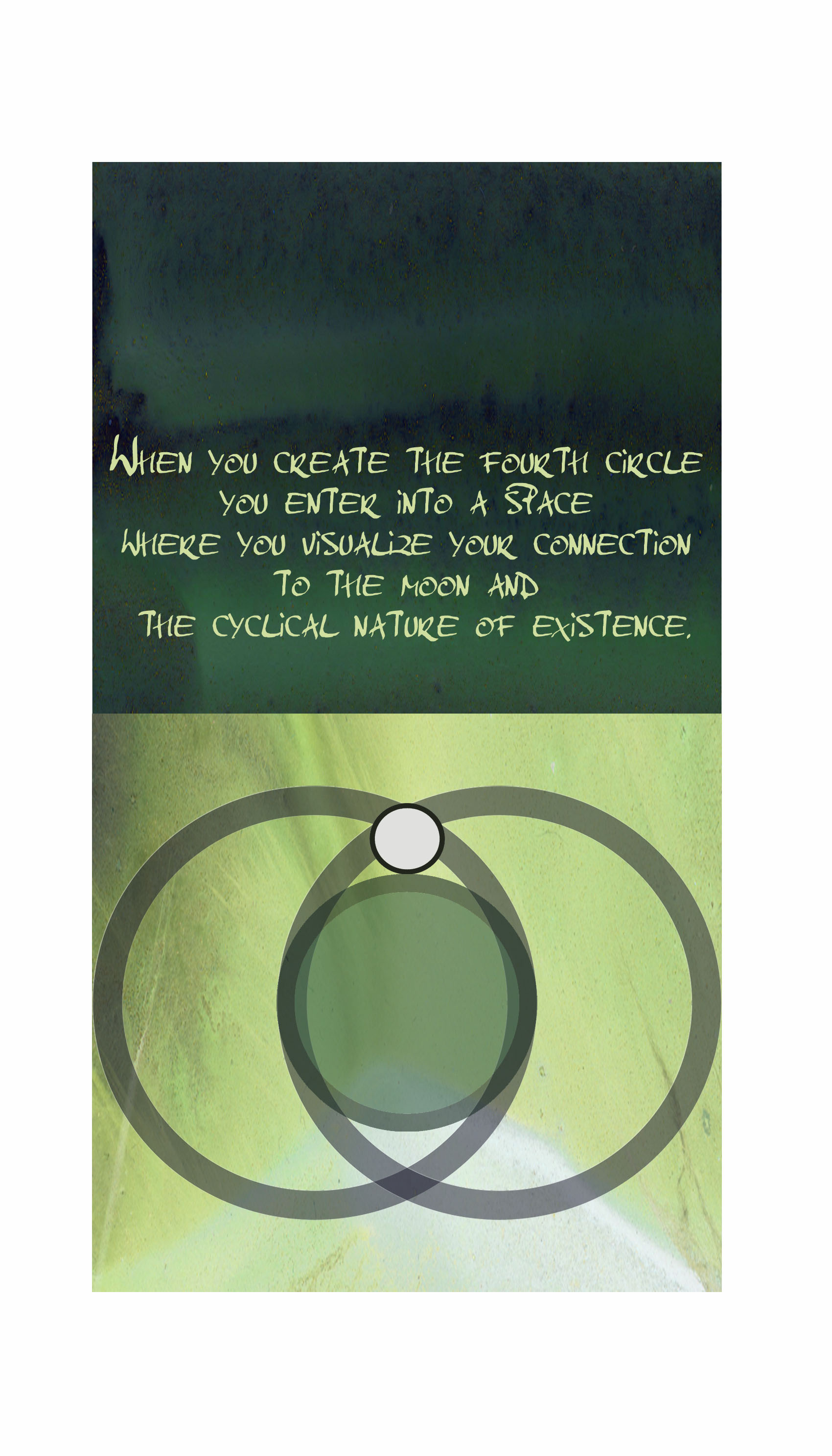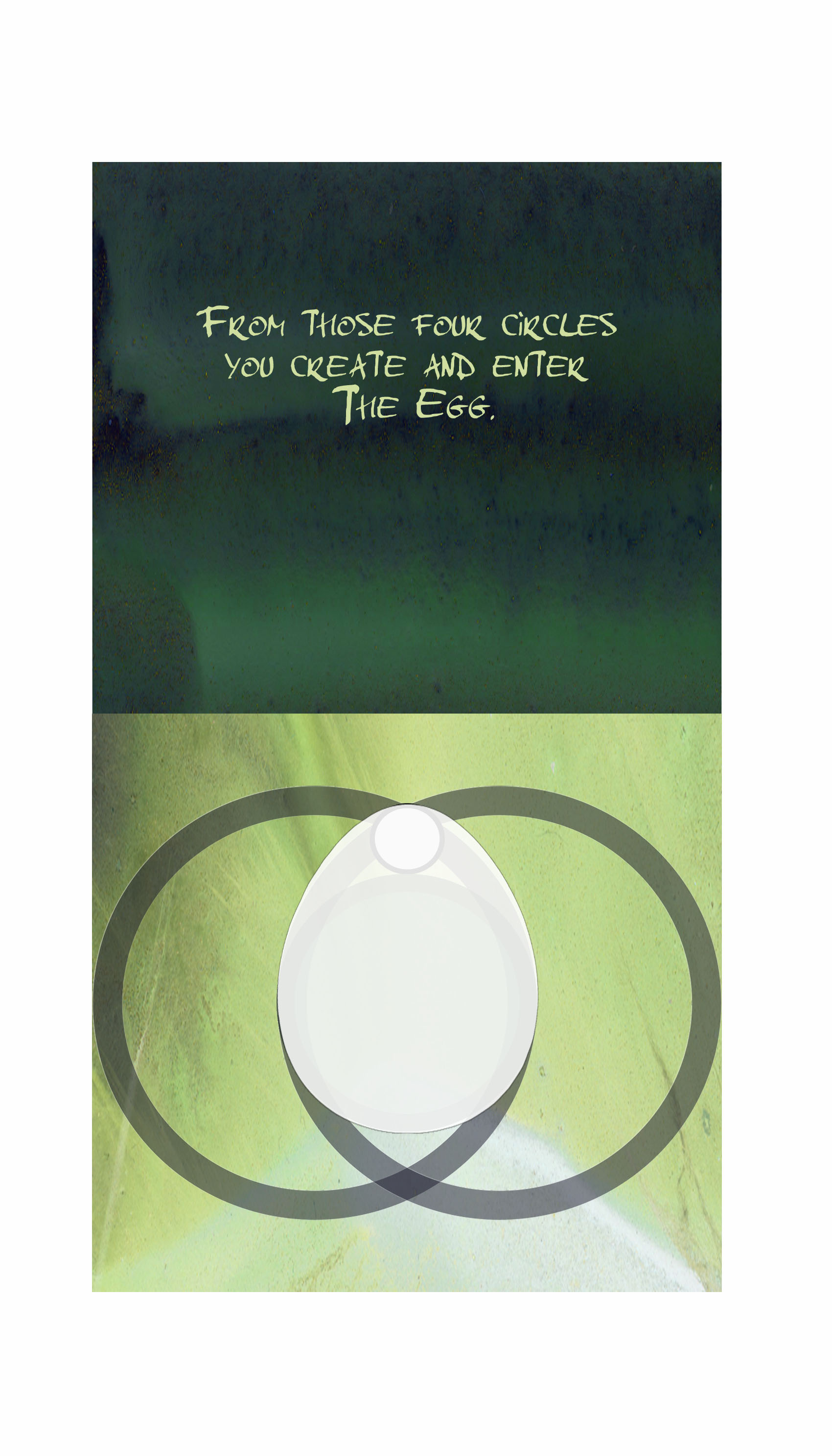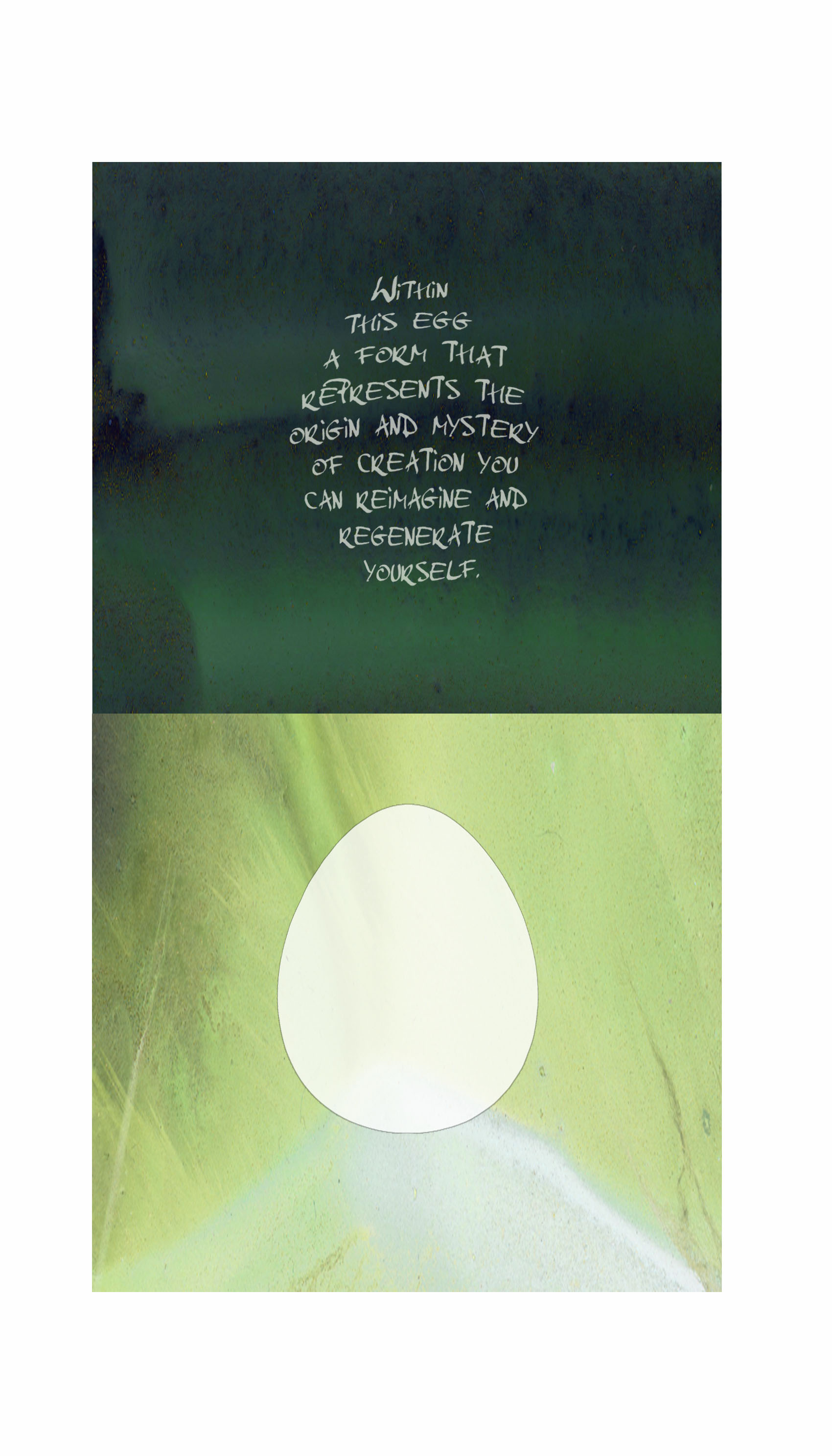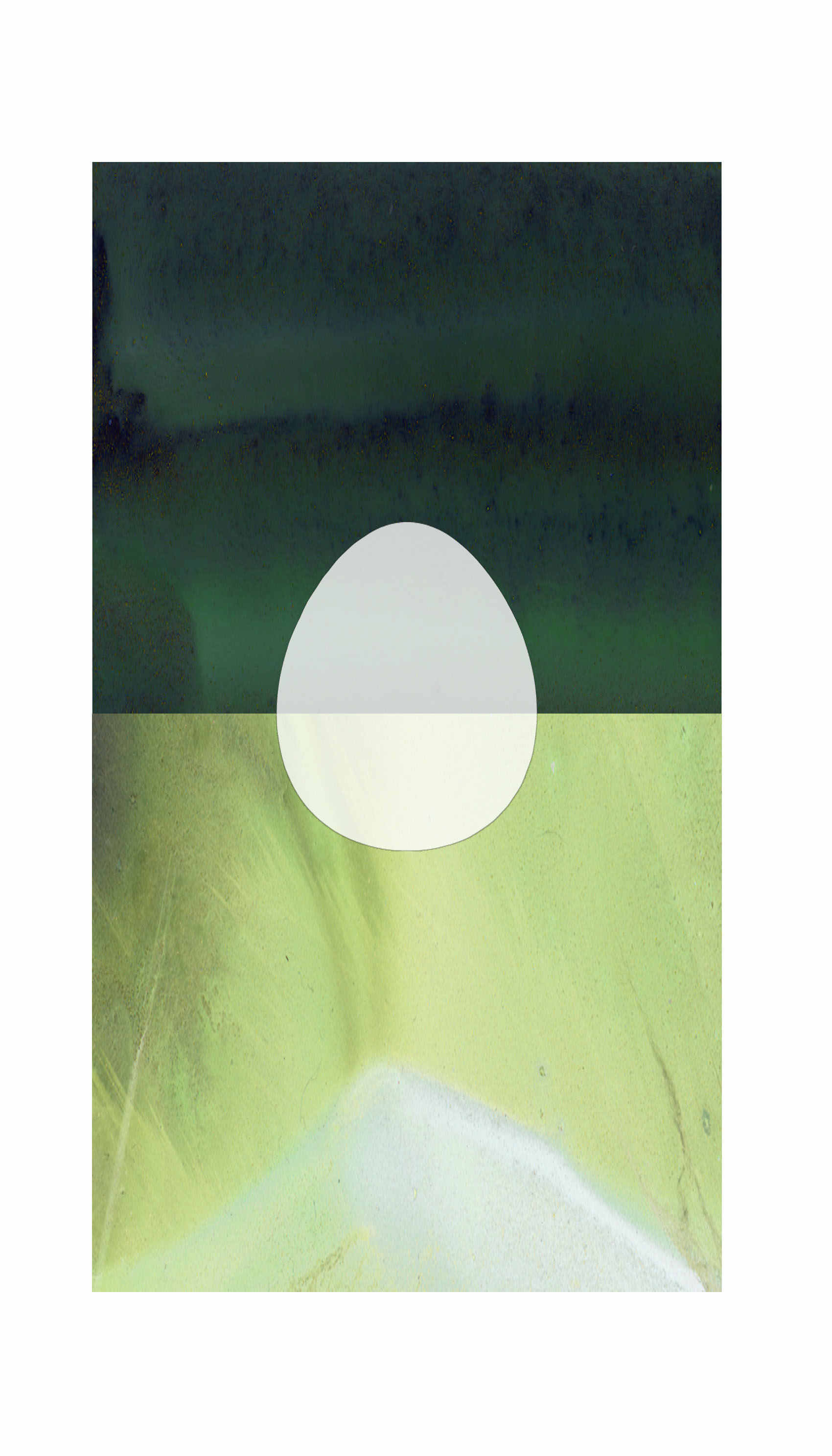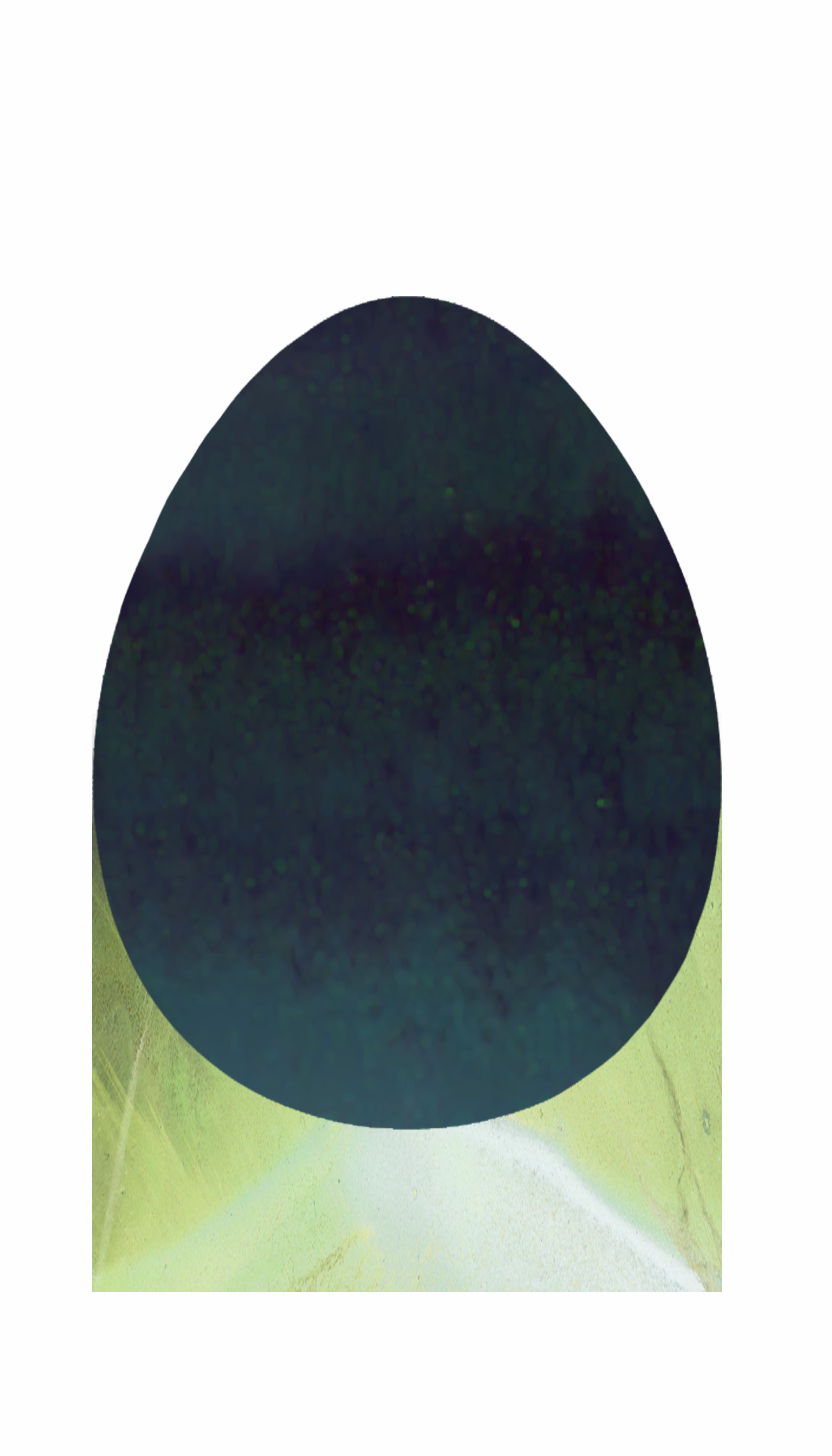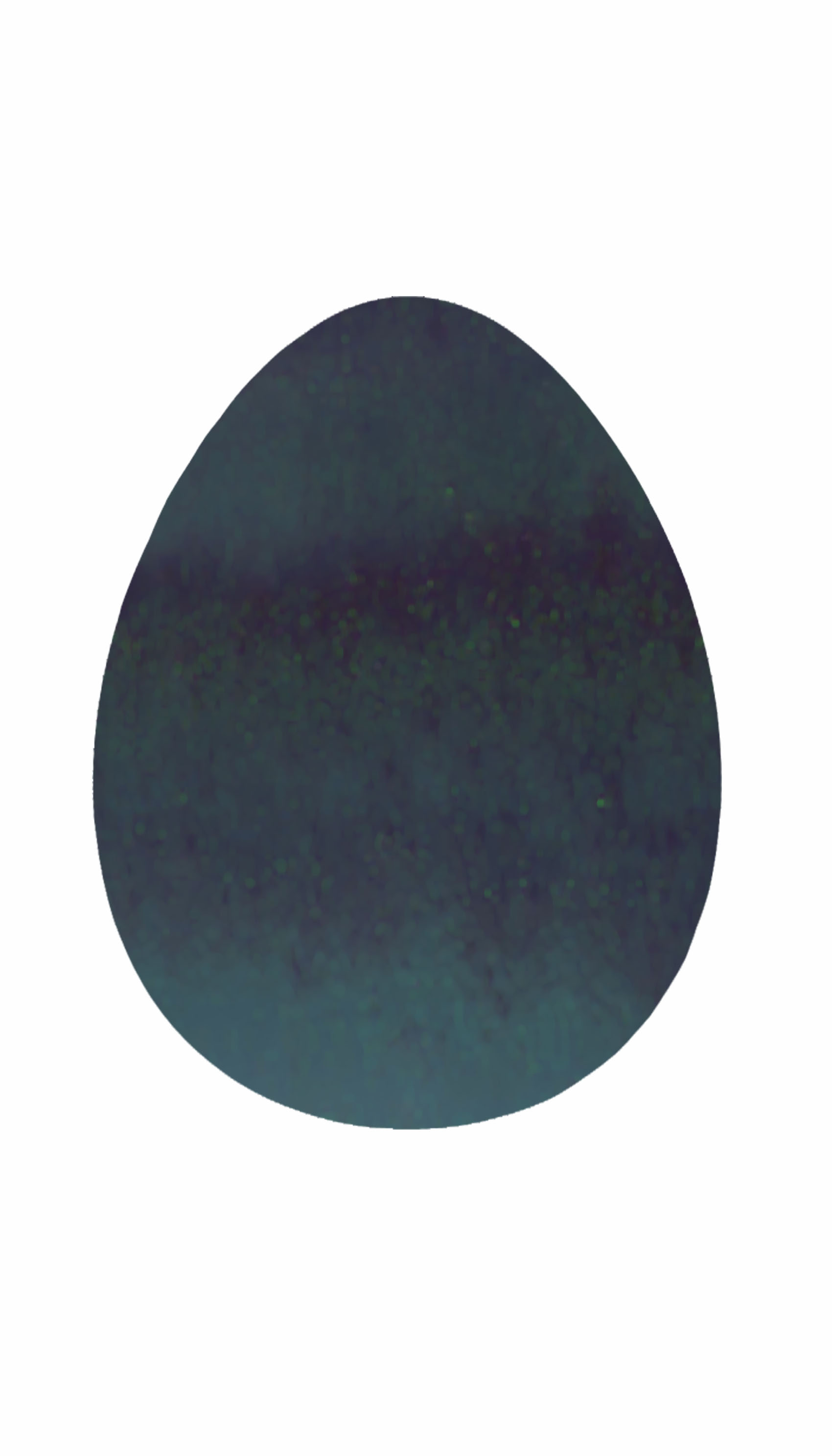A Brief History of Cymatics
"The geometry of the shapes is solidified music" - Pythagoras
From ancient Greek: κῦμα, meaning "wave" is what inspired scientist Hans Jenny to use the term Cymatics, to describe a subset of modal vibrational phenomena - the study of visible sound and vibration in the 1960s. Jenny (1904-1972) was a physician and natural scientist. In 'Cymatics: The Study of Wave Phenomena' he concluded about what he had observed, "This is not an unregulated chaos; it is a dynamic but ordered pattern."
And so, Cymatics refers to the study of the periodical effects that sound and vibrations exercise on matter. Cymatics can be described as a field of research studying the observations and the measurements of the vibrational sound frequencies interacting with all kinds of matter.
The first person to leave a written record of this work was arguably Leonardo da Vinci. In the late 1400’s, after observing how the dust on his work table stirred to create shapes when he vibrated the table, he wrote, “I say that when a table is struck in different places the dust that is upon it is reduced to various shapes of mounds and tiny hillocks.” Da Vinci’s close observation of dust under the influence of vibration was, quite literally, sound made visible. Rather like sprinkling powder on a fingerprint to render it visible, a light sprinkling of particulate matter on any vibrating surface will reveal hidden sound patterns.
It was the 1630s when Galileo Galilei reported an experiment where brass dust shapes up into equidistant and parallel lines once subjected to vibrations.
In 1680, Robert Hooke, Oxford University English scientist, described an experiment where he used a violin bow to exercise vibrations onto a glass plate with flour on top and described the “nodal” patterns. What he described was further explored and documented by Ernst Chladni, a German musician and scientist who used a high-resonance copper plate, covered with lycopodyum dust, subjected to vibrations through the use of a violin bow. Different inclinations of the bow would produce different vibrations and corresponding shapes, which we call today ‘Chladni Figures’.
In the late 18th-century he produced Entdeckungen über die Theorie des Klanges (Discoveries in the Theory of Sound), in which he detailed his experiments. He is sometimes labelled the "father of acoustics" for providing a significant contribution to the understanding of acoustic phenomena and how musical instruments functioned. Such patterns are now commonly termed "Chladni figures".
Another example of how sound generates geometric patterns, are the results of H. Irwine Whitty, who studied the connection between music and geometry with the aid of the harmonograph, a mechanical machine that uses pendulums to create geometric figures and drawings. He concludes that “the facts that musical notes are due to regular air-pulses, and that the pitch of the note depends on the frequency with which these pulses succeed each other, are too well known to require any extended notice”, referring to the already established works of Chladni.
Plate VIII, Harmonograph, H. Irwine Whitty, 1893
The Harmonograph is a mechanical apparatus that employs pendulums to create a geometric image. The drawings created typically are Lissajous curves or related drawings of greater complexity. The devices, which began to appear more frequently in the mid-19th century, cannot be attributed to a single person obviously, but Hugh Blackburn, a professor of mathematics at the University of Glasgow, is commonly named the official inventor.
Michael Faraday (1791-1867), english chemist and physician, writes into his diaries about the many experiments he conducted to report the effects of electromagnetic vibrations on water, oils and various types of powders, defined as Crispations. Faraday was fascinated by these phenomena and always very good at demonstrating to his audiences at the Royal Institution.
He wrote about putting a candle exactly below a glass plate and holding a screen of tracing paper an inch above it, the image of the vibrational effects on different types of matter was striking. Each heap of powder or pour of liquid gave a different effect as it appeared and disappeared. At the corners a fainter image appeared, and then as the screen was nearer or farther, lines of light in 2 or even 4 directions appeared consistently. Faraday did not identify any potential applications for crispations and as far as is known never reopened his investigations in this field.
Lord Rayleigh, an English physicist and second Cavendish Professor of Physics at Cambridge University, earned the Nobel Prize for Physics in 1904, along with William Ramsay, for the discovery of the element argon. He also discovered surface waves in seismology, now known as Rayleigh waves. His major treatise, 'Theory of Sound,' in two volumes, includes a chapter on the 'Vibrations of Plates' as well, and is still considered an important work. In it he explored “nodal” phenomena in depth.
At the dawn of recorded sound history, it was as much a visual translation as an auditory one. The phenomenon of recording music relied upon the act — via the medium of a vibrating surface — of converting sound waves into physical motion, and a subsequent act of inscription on a surface that could be repeated. The earliest practical example of such a recording apparatus was Édouard-Léon Scott de Martinville's Phonautograph. Patented in 1857, it consisted of a vibrating diaphragm, lever, and a hog's bristle brush which scratched sound into soot-coated paper or glass. Scott de Martinville conceived the marks produced as a form of "auto-stenography", where the inflections and intonations of an individual sound might be read by anyone with the required patience to learn this new form of "script". This “visibility of sound” fuelled much debate between artists, musicians, scientists, and even lawyers about what precisely these scratches and squiggles constituted. Were they a kind of writing, an expository method of display and measurement, or a mutable and plastic material — a site of aesthetic transformation and potential production? These aesthetic concerns grew to become well established in the more esoteric and expressionistic visual and musical practices of the late nineteenth century.
Leon Scott de Martinville's Phonautograph, 1857
Alexander Graham Bell as well felt compelled to commingle the auditory and the visual when he invented the Photophone. He exclaimed to his father:
“I have heard articulate speech produced by sunlight! I have heard a ray of the sun laugh and cough and sing!... I have been able to hear a shadow, and I have even perceived by ear the passage of the cloud across the sun's disk!”
Illustration of the Photophone's transmitter, from El mundo físico (1882) by Amédée Guillemin
This ingenious device consisted of a mouthpiece attached to a chamber capped with a thin mirror. When spoken into, the mirror would vibrate, thereby modulating a beam of sunlight — effectively encoding it with the sound. This vibrating light beam was then picked up and turned back into sound by a mirrored parabolic receiver some distance away. As Steven Connor has noted, the communications landscape of the late nineteenth century was characterised by "a kind of conversion mania, as inventors and engineers sought more and more ways in which different kinds of energy and sensory form could be translated into each other.”
The popular singer and philanthropist Margaret Watts Hughes entered this field with a device similar in most respects to Bell's Photophone. Her "Eidophone", which she conceived of and produced in order to measure the power of her own voice, consisted of a mouthpiece leading to a receiving chamber, over which was stretched a rubber membrane. Her experiments with this device involved sprinkling a variety of powders onto its surface, then singing into it to see how far these powders would leap. As she observed:
“I had been working on this path until May, 1885, when on one occasion as I sang I noticed that the seeds which I had placed on the India rubber membrane, on becoming quiescent, instead of scattering promiscuously in all directions and falling over the edge of the receiver onto the table, as was customary when a rather loud note was sung, resolved themselves into a perfect geometrical figure.”
Illustrations of these phenomena, which she termed Voice Figures, can be found in an article in the Century from 1891. Arranged in order of increasing complexity, the figures display a clear hierarchy of forms, from the simple "primitive" and geometrical, to more complex figures that look more like floral shapes.
We know that she went on to experiment with placing various consistencies of pastes and liquids on the instrument as a way of introducing binding mediums to "fix" the figures she made, resulting in a series of figures that both resembled and were named after flowers. These images were produced by placing the Eidophone's diaphragm face up: the figure would then be sung into existence, and the glass plate then placed on top to capture it.
The following is a group of works she called “Impression Figures”, which I think are by far the most visually and symbolically rich of the images she produced. These were made by coating a glass plate and the diaphragm of a Eidophone with pigment, then passing it over the plate's surface while singing a note into its mouthpiece.
Mary Desiree Waller (daughter of a famous English physiologist, August D. Waller) became fascinated by Chladni’s work and recreated all the forms he discovered, taking his work to a higher level. Her book ‘Chladni Figures, a Study in Symmetry was published posthumously in 1961 and includes details of her novel method of exciting plates employing solid carbon dioxide chips. She approached the subject of Chladni Figures with scientific rigor and her work represents a rich resource for students of this branch of acoustics, including some of the mathematical equations that describe the phenomena.
Mary Desiree Waller, Chladni Figures, a Study in Symmetry, 1961
Moving from these important inventors, a wide range of artists and practitioners have explored the natural phenomenon of sound resonance. Most famous for his work on how water crystals change under the vibrational effect of various words Dr Masaru Emoto, also studied how different types of music affect water molecules. The Emoto music studies demonstrate how certain types of sound, like classical music played in the 432 htz range, generate beautiful crystalline patterns, while jarring music played in the 440 htz range, generate ugly and distorted crystalline formations. In the images below you see the crystalline formation resulting from water being exposed to Mozart’s Symphony No. 40 and then in contrast what the water crystal image looks like after being exposed to AC/DC’s anthem Highway to Hell.
The inspiration for the exploration of Cymatics, as a field is steeped in “anthroposophy,” a philosophy founded by Rudolf Steiner (1861-1925), which states that human beings can intellectually access and uncover elements of an existing spiritual plane, and the person who made arguably the largest contribution in the twentieth century was Hans Jenny (1904–1972). Jenny was a Swiss medical doctor and scientist who published his first volume, Kymatic—a title derived from the Greek word kuma (wave), a description of the periodic effects that sound and vibration have on matter in 1967, and his second in 1972. His two volumes are a visual inventory, which he observed and described in great detail while leaving scientific and mathematical explanations to scientists who would come after him.
Hans Jenny studied visual sound intensively. As a physician, fine artist, pianist, philosopher, historian, and empirical researcher, Jenny conducted a wide range of experiments documenting the effects of sound and energy on various media.
He also documented his experiments in 16mm films entitled Cymatic SoundScapes, Bringing Matter to Life with Sound.
Most ancient cultures used the seemingly magical power of sound to heal. Sound healing had almost disappeared in the west until the 1930s when acoustic researchers discovered ultrasound and its medical properties. With this discovery, research burgeoned and today the ancient art of sound healing is rapidly developing into a new science. Cymatics are playing a significant role in these new applications.
The Aboriginal people of Australia are the first known culture to heal with sound. Their ‘yidaki’ (modern name, didgeridoo) has been used as a healing tool for at least 40,000 years. The Aborigines healed broken bones, muscle tears and illnesses of every kind using their enigmatic musical instrument. Interestingly, the sounds emitted by the yidaki are in alignment with modern sound healing technology. It is becoming apparent that the wisdom of the ancients was based on ‘sound’ principles.
The Egyptian culture extends back to 4000 BC and they have a long tradition of vowel sound chant. A Greek traveler, Demetrius, circa 200 B.C., wrote that the Egyptians used vowel sounds in their rituals:
‘In Egypt, when priests sing hymns to the Gods they sing the seven vowels in due succession and the sound has such euphony that men listen to it instead of the flute and the lyre.’
The Corpus Hermeticum also contains a reference to the Egyptian’s use of sound as distinct from words. This book was probably related in the 1st century AD but it is believed to be much older, possible as early as 1400 BC. The Egyptians believed that vowel sounds were sacred, so much so that their written hieroglyphic language contains no vowels. We can, therefore, safely assume that vowel sound chant carried a powerful significance for their priests.
Egyptian priestesses used sistra, a type of musical rattle instrument with metal discs that creates not only a pleasant jangling sound but, as we now know, also generates copious amounts of ultrasound. Ultrasound is an effective healing modality and is used today in hospitals and clinics so it is entirely possible that ceremonies in which many sistra were used were not merely employed to enhance the musical soundscape but were intended to enhance the healing effect.
In the wall scene below, from a building erected by Queen Hatshepsut, three priestesses play sistra, accompanying a harpist, another instrument known to have healing qualities.
The Greek, Pythagoras (circa 500 BC) was, in a very real sense, the father of music therapy. The Pythagoras Mystery School, based on the island of Crotona, taught the use of flute and lyre as the primary healing instruments and although none of Pythagoras’ writings have come down to us we know of his philosophy and techniques from many contemporary writers. With his monochord—a single-stringed musical instrument that uses a fixed weight to provide tension—Pythagoras was able to unravel the mysteries of musical intervals.
Lamblichus noted that:
‘Pythagoras considered that music contributed greatly to health, if used in the right way…He called his method ‘musical medicine’…To the accompaniment of Pythagoras’ his followers would sing in unison certain chants…At other times his disciples employed music as medicine, with certain melodies composed to cure the passions of the psyche…anger and aggression.’
Dr Peter Guy Manners, was an English Osteopath, and pioneer in using sound to heal. He studied Dr Jenny's Cymatics and created Cymatics therapy. Dr Manners correlated different harmonic frequencies that are the healthy resonant frequencies of various parts of the body. He researched the use of Cymatics for medical diagnosis and treatment, including the healing effects of certain sound vibrations and harmonics on the structure and chemistry of the human body as well as the importance of sound and light in our natural environment. Cymatics therapy uses a toning device to transmit into diseased areas of the body the signature vibrations of healthy organs and tissues. Dr Manners designed a machine that would deliver frequencies directly to the body using an applicator. There are over 700 frequencies that can be transmitted through this tool to help normalize imbalances and synchronize the cells' frequencies back to their natural, healthy state of vibrational resonance. Sound is capable of rearranging the structure of molecules, and therefore has unlimited potential as a tool for healing. A form of sound therapy that is not applied through hearing, but by instruments that send audible sound waves directly into the body through the skin.
John Stuart Reid, english acoustic engineer, and inventor of the Cymascope, has continued this work with a device able to display frequencies in water in the form of geometrical shapes which he refers to as Cymaglyphs, a term he personally coined. Reid’s acoustics research in the pyramids has provided strong evidence that the Egyptians designed their chapels and burial chambers to be reverberant in order to enhance sonic-based ceremonies. Reid underwent a significant healing of his lower back during his experiments in the King’s Chamber that he attributes to the resonant properties of the sarcophagus. He conjectures that the acoustic resonance was deliberately contrived by the Egyptian architects and thinks it very likely that they were aware of the healing properties of sound long before the Greeks.
Returning to the use of vowel sound chant—the production of vocal sounds rather than words—many eastern cultures developed variations of chant for healing and for spiritual ascension. Studies have shown that vowel sound chants can bring about many positive physiological changes in the body, and create an altered state of consciousness in which the chanter becomes serene and healthy.
Mandara Cromdell is the Founder and Board President of ISTA (The International Sound Therapy Association), and producer of Cyma Technologies AMI 750, a frequency generator created for multiple healing modalities. She has also done extensive study on the relationship between vibrational frequencies and spirituality in India, England and the US, and she frames her explorations around the “Art of Sacred Sound”. He book “Soundflower” is the story of a woman whose divine quest began as a child with a mystical experience in the Gothic architecture of a church. Signs and symbols experienced in her youth continued to appear throughout her life, but one of the most profound spiritual messages came to her from science in the form Cymatics - sound made visible.
At a recent conference Mandara discussed the origin of the Shri Lanka Yantra and it’s origin in terms of the syllable arrangement in Sanskrit. Each mantra is in fact a combination of syllables whose resonant frequency effect specific reflex points in the human mouth. They are also correspondent to the human chakra system and intended to be chanted in spaces of precise resonant design.
The Sri Yantra is a good example of this intention, and is produced cymatically when “Om,” the Hindu primordial sound of creation, is intoned into a tonoscope. The shape of the Sri Yantra, a self-similar, fractal interlaced tetrahedra within concentric circles is the visual representation of the Om chant, intended to match the vibration behind the cosmos, that is the “sound” of the aetheric medium or “fabric” of space. It seems that Hindus have known for thousands of years that sound possessed geometry, or sound into form is a fundamental truth of reality. The Om chant itself is one for expanding consciousness by developing resonance with the cosmos, and I have no doubt that participants experienced the sound in 3-4 and 5 dimensions during practice. The Sri Lankra is simply a 2D tool that represents dimensions, frequencies and possibilities.
Contemporary German photographer, philosopher and Cymatic researcher, Alexander Lauterwasser has brought the work of Hans Jenny into the 21st Century using finely crafted crystal oscillators to resonate steel plates covered with fine sand and also to vibrate small samples of water in Petri dishes. His first book, “Wasser Klang Bilder” (Water Sound Images) features imagery of light reflecting off of the surface of water set into motion by sound sources ranging from pure sine waves, to music by Ludwig van Beethoven, Karlheinz Stockhausen, electroacoustic group Kymatik (who often record in surround sound ambisonics), and overtone singing. In 2006, MACROmedia Publishing published the English version of the Lauterwasser book titled Water Sound Images.
John Telfer uses various types of matter to visualize sound vibrations...including bubbles! If a bubble is vibrated with a low frequency sine wave it adopts steady states of vibration. For Telfer an artist and musician, the structuring of tonal space based on harmonics is significant. After discovering Hans Jenny’s Cymatik, he has worked to bring his musical and visual interests together in images that illustrate the force of sound, such as these single bubbles exposed to various sound frequencies.
Before first bringing his performance to television in the early 80s, Tom Noddy spent over a decade developing a new kind of performance piece. Sitting alone with dime store bubble solution, a childlike sense of wonder and an adult sense of humor he brought a new thing into being: Bubble Magic. Bubble magic as well takes it’s cues from geometry and particle theory. Each bubble sculpture he creates illustrates the intelligence and design within nature made visible with a thin membrane and air.
Shannon Novak, a New Zealand-born fine artist, commissioned the imaging of 12 piano notes as inspiration for a series of 12 musical canvases using the Cymascope Technology developed by John Stuart Reid.
Shannon was delighted with the results and commented:
“I have always been fascinated with the translation of that which is invisible, into something visible that individuals can relate to, in particular, the representation of sound through colour and geometric form. I saw the use of cymatic technology as one method of such representation and a unique and compelling way of educating individuals about the link between sound, colour, and geometric form“.
Cymatechnologies used the video footage of the same 12 notes within the CymaScope app for Apple and Android platforms. The app is a very fun and easy way to visualize everyday sounds as well as music, and you can download it HERE
Another creator who has used a wide range of materials to illustrate vibrational frequencies is David Schiermeyer. Schiermeyer has experimented with cymatics on water) in deeper and more dimensional ways with surface area rotation and dimensional structures of undertones and frequencies themselves. He works with plasma and static resonance to develop technologies like the life viewer, which was the first visualizing equipment I tried myself.
Life viewers are cymatic kits for creating and studying the structures of a frequencies’ behavior, music, or soundscape in water or your choice of fluid mediums. you can get your own HERE
“Frequencies are only patterns to their own surroundings, just like us. As beings we can only experience what our surroundings offer. What matters is how we use that experience. We tune into different channels just like a mixing board, our minds separating current and frequencies. We can auto-tune our mind by adjusting our tone, our thoughts, our actions. We are the living experience of cymatics. We are the experience of living information. We are the experience of our surroundings, and our surroundings are experiencing through ourselves. Once we grasp this as a species there will be a true evolution of being.”
—David Schiermeyer
Be sure to check out David’s YouTube channel and TikTok for videos like this.
Now of course I have only touched on a brief history here, but there will be more to come as I continue my own research and experiments. I will leave you with a beautiful example of cymatics applied in various ways through the music of Nigel Stanford titled CYMATICS: Science Vs. Music.
Enjoy!
Fibonacci and Cymatics
What is the most infinitely ancient and universally tangible image, form and equation of all?
The Golden Spiral, or Fibonacci’s Spiral
The first written record of the Fibonacci's Sequence comes from around 200BC in the Sanskrit tradition of prosody; basically a study of phonetics. In the West, the Fibonacci sequence first appears in the book Liber Abaci by Leonardo of Pisa, written in 1202. Leonardo was known as Fibonacci.
Fibonacci's equation was based on an idealized pattern of rabbit reproduction, which consisted of mating pairs of rabbits reproducing at optimum efficiency. Because rabbits breed every month, the sequence looks like this:
Begin with one Female rabbit, one month old
At the end of the first month a female mates, but there is still just her and her mate, 1 pair.
At the end of the second month the female produces a new pair, so now there are 2 pairs of rabbits in the field.
At the end of the third month, the original female produces a second pair, making 3 pairs in all in the field.
At the end of the fourth month, the original female has produced yet another new pair, the female born two months ago produces her first pair also, making 5 pairs.
And so on. Adding the sum of the previous two numbers to get the following number creates the sequence.
1+1=2
1+2=3
2+3=5
3+5=8
5+8=13...
And on into infinity.
It is no accident that Fibonacci came across this pattern studying nature, because when the sequence is translated geometrically, it becomes a rectangle. If you continue to create successive squares and spiral out the rectangle, the quadratic equation of the sides becomes closer and closer to 1.618033, Phi or the Golden Ratio.
And that Golden Ratio has been romancing artists, scientists, musicians, and mathematicians for centuries.
Mona Lisa with the Golden Ratio imposed
If you would like to check out the applications and implications of the sequence, I would start here with Arthur Benjamin. He is a truly inspired teacher.
Now if you take that series of rectangles and plot a spiral by drawing a 90-degree curve through each square, you have the Golden Spiral, also known as Fibonacci’s Spiral.
And it is not just physical/ tangible objects that carry the sequence. Fibonacci Numbers are often the underlying structure of the world's most played and universally adored music.
There are 13 notes in the Chromatic Scale, broken into 8 white keys and 5 black keys, the 13th note being the first note in the following octave. There are 8 notes in the Diatonic Scale, the 8th being the first note in the following octave. When we stack the two scales on top of each other, the full sequence is revealed. Further, the 3rd and 5th note in any octave are the basic foundation of all cords and are based on a tone which is a combination of 2 steps and 1 step from the root tone, that is the 1st note of the scale. To see this visually, check out this great video from Sylvain Lalonde:
Fibonacci and Phi relationships are found in the timing of musical compositions as well, from Mozart to Pink, the climax or bridge of a song is most often found at roughly the phi point (61.8%) of the song. Further, the typical three-chord structure of most songs in any key is made up of the key cord along with it’s Fibonacci & Phi partner. This is analogous to the “A is to B as B is to C” basis for the golden ratio.
It makes you wonder how much our aesthetic values and personal expressions are based on much more ancient and fundamental systems.
Dave Carlton, one of the contributors to Hooktheory, a modern music theory site, analyzed 13,000 popular songs for patterns, and published the results in an online article here:
He found, as you might expect that C/Am and G/Em are the most popular key signatures. With G, F, C and Am the most popular cords. But more interesting to me is the relationship of cords to each other in the songs he analyzed. Such as, what cord is most likely to come next in popular music? He found in the case of C with and Em, 93% of the time the other cords will be F, Am or both.
So here we have seen the same mathematical sequence equally applied to visible and audible phenomenon. This is in fact a brilliant starting point to understanding the nature of existence.
All things in existence can be thought of in two ways:
Atomic particles like Atoms, protons and neutrons or
Vibrations like Electromagnetic fields and sound-forms.
And whether you choose an atomic or vibrational world view the same rules will always apply. I think music is a key starting point to this exploration because it is vibration made tangible through the tools we use to express it. And, if you impose a worldview of waveforms onto musical theory you can begin to talk about dimensions and infinity much more easily.
Dimensional levels are simply different base rate wavelengths. It is not the difference between line, shape, form and time as many of us were taught in school. In fact the only difference between this dimension and any other is the waveform we express through vibration. More dense life forms like crystals and plants have a much lower base wavelength, and as you travel dimensionally upwards the base wavelength increases.
To illustrate the beauty of this we can think about the Chromatic scale. If you look at a piano’s keyboard, it has 8 white keys and 5 black keys in each octave. The last note is the first note of the next octave. This musical system theoretically goes on infinitely in both directions, we just happen to use an instrument with a set number of octaves that sounds great at our level of vibration.
If you picture yourself on the third key of any octave (the third dimension being the vibrational and atomic level we perceive ourselves as residing at), and think about how big we perceive the universe to be from there… Imagine how much more is out there that we cannot yet perceive.
“If the doors of perception were cleansed, everything would appear to man as it is - infinite.”
William Blake
“Only love can be divided endlessly and still not diminish.”
Anne Morrow Lindbergh
Re-Romanticizing Valentines Day: Hearts, Flowers, Bunnies, Ballads, and of course Quantum Mechanics
St Valentine's Day
The history of Valentine's Day is really obscure. Its roots are in an ancient Roman festival called Lupercalia, a fertility celebration commemorated annually on February 15, and most scholars believe that St. Valentine of the Catholic Church was a priest who was executed/ martyred for performing secret marriage ceremonies. Before he was executed, he allegedly sent her a letter to his own true love signed..."Your Valentine."
The Heart
The heart symbol we use to express our affections today can be traced back to Cro-Magnon hunters in Europe who used the symbol in pictographs.
Cave painting from Cueva del Pindal
The Egyptians crafted a stylized heart symbol to represent the center of life and morality.
Illustrations of Egyptian artifacts
And the ancient Greeks decorated with a heart shaped symbol to represent the division between the physical and spiritual realms; as pictured here in a threshold mosaic.
Mosaic uncovered in Ancient Ephesus
The heart symbol has also been found on old Roman coins and artifacts like this one, which apparently depicts a seedpod from the extinct plant Silphium.
The Silphium seedpod is the most likely candidate as origin for our modern heart shape. It was used medicinally to treat infertility, and as a contraceptive. It was also a well know treatment for mental illness, in particular the "madness of love". In fact most historians believe that the Romans did not relate the symbol to love at all but rather to sex and carnality, it's form reminiscent of the vulva, breasts, butts, testicles... you know, real Roman currency.
And so, through the centuries the heart came to represent not just sex but love. And in any case, a symbol referencing the relationship between human and natural history.
The Garden of Earthly Delights by Hieronymus Bosch, 1500
Modern society has an obvious and longstanding affection for the symbol, and we seem to imbue places and things that exhibit this symbology with particular meaning. A quick online search will turn up troves of photos of found hearts everywhere: Islands and ponds, ferns and swans, leaves and puddles, where you seek so shall you find.
Heart-shaped Lichens (Crustose), Audubon Corkscrew Swamp Sanctuary
The 130,000 square yard islet of Galesnjak, Croatia.
This private and uninhabited Croatian island once contained only wild plants, trees and untouched beaches. However since it was "discovered" on Google Earth in 2009, the island has become a major tourist destination. In fact there are at least 25 heart shaped islands in the world, all of then famed for their shape and it's connotations.
This got me thinking about universally understood and universally attractive shapes and forms. And by the way, what is the MOST infinitely ancient and universally tangible image or form?
I submit to you:
The Golden Spiral, or Fibonacci’s Spiral
Flowers
The first written record of the Fibonacci's Sequence comes from around 200BC in the Sanskrit tradition of prosody; basically a study of phonetics. In the West, the Fibonacci sequence first appears in the book Liber Abaci by Leonardo of Pisa, written in 1202. Leonardo was known as Fibonacci.
Bunnies
Fibonacci's equation was based on an idealized pattern of rabbit reproduction, which consisted of mating pairs of rabbits reproducing at optimum efficiency. Because rabbits begin breeding when they are one month old, the sequence looks like this.
Image Credit: Curiosa Mathmatica
Begin with one Female rabbit, one month old
At the end of the first month a female mates, but there is still just her and her mate, 1 pair.
At the end of the second month the female produces a new pair, so now there are 2 pairs of rabbits.
At the end of the third month, the original female produces a second pair, making 3 pairs in all.
At the end of the fourth month, the original female has produced yet another new pair, the female born two months ago produces her first pair also, making 5 pairs.
And so on. Adding the sum of the previous two numbers to get the following number creates the sequence.
1+1=2
1+2=3
2+3=5
3+5=8
5+8=13...
And on into infinity.
It is no accident that Fibonacci came across this pattern studying nature, because this pattern is everywhere in nature. You can calculate it in pine cones, sunflowers, even hurricanes...
Sunflower with Fibonacci sequence imposed
Hurricane Sandy with Fibonacci's Spiral Imposed
When the sequence is translated geometrically, it is a rectangle. If you continue to create successive squares and spiral out of the first rectangle, the quadratic equation of the sides becomes closer and closer to 1.618033, which is Phi or the Golden Ratio. That Golden Ratio has been romancing artists, scientists, musicians, and mathematicians for centuries.
Mona Lisa with the Golden Ratio imposed
If you would like to check out further applications and implications of the sequence, I would start here with Arthur Benjamin. He is a truly inspired mathematician and teacher.
If you are a hack like me, let's continue...
If you take that series of rectangles and plot a spiral by drawing a 90-degree curve through each square, you have the Golden Spiral, also known as Fibonacci’s Spiral.
The Golden Spiral expressed in a Nautilus shell
The Golden Spiral expressed in the human ear
Ballads
It is not just physical/ visible objects that carry the sequence. Fibonacci Numbers are also the underlying structure of the worlds most played and universally adored music.
There are 13 notes in the Chromatic Scale, broken into 8 white keys and 5 black keys, the 13th note being the first note in the following octave. There are 8 notes in the Diatonic Scale (just the 8 white keys of the Chromatic Scale) the 8th being the first note in the following octave. When we stack the two scales on top of each other visually, you can see how the Fibonacci numbers correspond with cords.
I will not elaborate on this right now, but if you are interested, please check out this great video from Sylvain Lalonde:
Fibonacci and phi relationships are found in the timing of musical compositions as well, from Mozart to Pink, the climax or bridge of a song is most often found at roughly the phi point (61.8%) of the song. Further, the typical three or four chord structure of most songs in any key, is made up of the key cord along with it’s Fibonacci & Phi partner plus one or two. This is analogous to the “A is to B as B is to C” basis for the golden ratio. It makes you wonder how many of our aesthetic values and personal expressions are based on these ancient and fundamental systems.
Dave Carlton, one of the contributors to Hooktheory, a modern music theory site, analyzed 13,000 popular songs for patterns, and published the results in an online article you can read here:
Hooktheory
He found, as you might expect, that C/Am and G/Em are the most popular key signatures. With G, F, C and Am the most popular cords. But more interesting to me, is the relationship of cords to each other in the songs he analyzed. Such as, what cord is most likely to come next in popular music? Well he found in the case of C with and Em, 93% of the time the other cords will be F, Am or both.
Not surprisingly, the most popular songs are also the most emotive, through a combination of effects. To illustrate this divine musical situation, I submit to you the following video snippet from comedian, Owen Benjamin. Owen is a musician, and has done several hilarious bits about the absurdity and homogeneity of pop music. In this one he provides a heartfelt exploration of Coldplay, and shares his own ballad OTPHJ (in a Walgreens).
As a side note, Owen’s ballad, is in fact a golden ratio composition, complicated a bit by the use of 2 bridge moments at measures 17 and 27 (double climaxes), the median of which is 21.7…61.8% of the 35 measure song.
Now we have seen the same mathematical sequence equally applied to visible and audible phenomenon. If you ask me, this is a brilliant opener to talking about the nature of existence.
Quantum Mechanics
All things in existence can be thought of in two ways:
Atomic particles like Atoms, protons and neutrons
or, Vibrations like Electromagnetic fields and sound-forms.
Whether you choose an atomic or vibrational world view, the same rules will always apply. I think music is a key starting point to this exploration because it is vibration made tangible through the tools we use to express it. And, if you will agree (for the moment) to impose a vibrational world view of waveforms onto musical theory, we can begin to talk about dimensions and infinity.
Dimensional levels are simply different base rate wavelengths. It is not really the difference between line, shape, form and time as many of us were taught. Those are three-dimensional expressions of vibration. In fact, the only difference between this dimension and any other is the waveform we express through vibration. More dense life forms like crystals and plants have a much lower base wavelength, and as you travel dimensionally upwards the base wavelength increases.
To illustrate the beauty of this we can think again about the Chromatic scale. If you look at a piano’s keyboard, it has 8 white keys and 5 black keys in each octave. The last note in the scale, is the first note of the next octave. This musical system theoretically goes on infinitely in both directions, we just happen to prefer an instrument with a set number of octaves that sounds great at our level of vibration.
If you picture yourself as any key on that piano, and think about how big we perceive the universe to be from that one point, our one key perspective in an infinite set of harmonic possibilities… Imagine how much more is out there, and how much more we have yet to perceive.
Now a message from our sponsors
Hubble Ultra Deep Field
This photo titled Hubble Ultra Deep Field, was captured in 2003 by The Hubble Telescope. To create it astronomers pointed the Hubble near constellation Orion and opened the shutter for 11 days. Using sensitive detectors and specialized filters, the telescope was able to capture an image with over 10,000 galaxies. And this was in just one tiny speck of sky that appears completely void of, even stars from earth. This year scientists went further with a 23 day exposure of a much smaller section of the Ultra Deep Field image, and titled it eXtreme Deep Field.
This image shows 5,500 individual galaxies, some of which are one ten-billionth the brightness of what our human eyes can see. Giving us a little glimpse of the infinity of existence we are more or less aware of.
I love these images in ways I cannot even clearly express; they excite and mystify me. So, I decided to create a couple of Valentines based on my own romance with creative expression and space exploration titled...
“Infinitely Yours”
The images are taken from photos of the Barred Spiral Galaxies NGC 986, and NGC1365, located 56 million light years away in the constellation Forenax.
NGC 986
NGC 1365
Thanks to free image licensing from NASA, I edited these galaxies together with the Fibonacci Spiral, and a lot of love.
NGC 986
NGC 1365
If you want to share these images with your Valentine, you can of course grab the low res version here for free, or go here to download a larger file.
I also have posted cards, stickers, tshirts, iphone cases, pillows and travel mugs in my Redbubble store.
Here's wishing you the most titillating February, whether you celebrate Valentines day or not.
Infinitely yours,
E
“If the doors of perception were cleansed, everything would appear to man as it is - infinite.”
William Blake
“Only love can be divided endlessly and still not diminish.”
Anne Morrow Lindbergh
On Sacred Geometry, Economy and Consciousness
Vitruvian Man, Leonardo Da Vinci
In my last post I discussed a common contemporary separation that exists between human and non-human worlds. A separation that I feel is at the core of our current ecological crisis. And at the heart of that severed relationship lays a misconception about our own divinity. Many of us were first introduced to nature as our dominion, something to cherish and protect. The story goes that God created the rest of nature as a gift for us, and that it is up to us to preserve and protect it from those that would attempt to misuse, master and destroy it. Nature however, is abundant, resilient and divine. The world’s most ancient people and today's most indigenous cultures did and do not locate God and divinity in a space above, or in a position unattainable to humankind. Past and present many peoples' relationship to God and Nature was and is one of kinship. In many places God is still an integrated reality experienced through intimate relations with the natural world, and perhaps the best way for us to enter into a more balanced relationship with nature and ecology is to collectively see ourselves as a part of it; recognize our divinity, and proceed to live in ways that allow us to participate in the effortless flow of energy that is so apparent in the rest of creation.
In his book, The Comedy of Survival, Joseph Meeker considers comedy and tragedy as forms of adaptive behavior in the natural world that either promote our survival (comedy) or estrange us from nature (tragedy), and he demonstrates how predominant western writers and philosophers have contributed our tragic view of life and following exploitation of the environment. The hero of this tragedy is the “anthropocentrist”, who places his moral struggles on a plane higher than his physical survival and therefore suffers, as does the environment. The comic hero’s approach to life allows him rather to enjoy, contribute and receive in equal measure…”make love not war”… an existence that Meeker feels has a much higher ecological value.
So what is ecological value? Giving and receiving happen effortlessly in nature. Trees take in sunlight and water and give off oxygen. They continue to give by stabilizing the soil, providing habitats for other plants and animals promoting biodiversity. Why is it not that simple for humans? What series of events has disconnected us from our source? And how can we get to a place of natural giving and receiving?
One important thinker on this topic of reciprocity is Charles Einstein. Einstein wrote the book Sacred Economics, and in the book he discusses our perception of scarcity and lack as an economic imperative based on our monetary system. He points to past systems of exchange like The Kula System where wealth and abundance are experienced communally by directly connecting needs with gifts. In these societies people were born with gifts and purpose just like us, but because they gave freely, and gave things that were distinctly personal they related to others through collaboration and symbiosis.
Our society certainly recognizes the value of gifts, and we value many things apart from their monetary value, but we continue to compete for this one generic reward system, money; a system that purposefully created our perception of scarcity. For more on Einstein’s work check out this short film:
In the capitalist market, our perception of scarcity is further amplified by the packaging and parceling of things once thought to have no price. Our once common holdings are now natural and cultural commodities. Bottled water, patents on seedlines and genetic codes, copyrights on art and ideas all contribute to our shared perception that resources and ideas are scarce and those of quality can be exchanged for a lot of, money. Lewis Hyde, poet, essayist, critic and champion of all forms of creativity, wrote a book titled The Gift in 1983. In the book he discusses the real value of creative practice and it’s increasing importance in contemporary society by saying that “The commercial side of our culture needs to be met with an indigenous counterforce.”
indigenous
ɪnˈdɪdʒɪnəs/
adjective
originating or occurring naturally in a particular place; native.
The thing I love about the word indigenous is that it is equally references all living things. And Hyde suggests that we endeavor to do, make, think, give and receive in relation to our particular place (natural and social) without fear of lack or scarcity. We need not see ourselves as isolated individuals with a limited radius living in competition for resources and survival; we are all part of the one thing there is, potential. For too long we have been told stories of separation.
Man and Woman
Individual and Society
Human and Nature
Physical and Spiritual
As part of my investigation into this paradigm of disconnection, I have begun to look at Sacred Geometry. Sacred Geometry appeals to me because it is equally based in quantum physics and the underlying mechanical structure of the physical world we see, while also illustrating an infinite set of realities, possibilities, and philosophies that follow from it’s application to spiritual inquiry and the state of human consciousness.
The first few images I have begun working with are The Seed of Life, The Flower of Life and The Fruit of Life or (Metatron’s Cube). The thing that is so interesting to me about these images is that they illustrate the most basic components of creation and physical existence outside of denominational boundaries like Creationism or the Big Bang Theory. Further, they belong to every culture. Architectural elements and illustrations of these images have been found on every continent, and within every world religion dating back to at least 11,000 BCE. There are many ways that mathematicians, physicists and philosophers read these images, and for more on the implications contained within them I would recommend this video series distributed by National Geographic.
Garret Lesi is a Theoretical Physist who recently gave a TEDtalk titled The Theory of Everything. Garret studies coral, and has investigated the coral polyps growth and symbiosis as single units of being within an infinitely expanding conscious organism, which he views as an illustration of our own potential. He is investigating the infinite set of subatomic particles and forces that make up our physical reality. When you look at the maps he has created of the subatomic particles currently visible with a particle excelerator, guess what appears… Sacred Geometry; which we should probably just refer to as the Geometry of Consciousness. It seems to me that this set of information has always been available to humankind but now we are really rediscovering it.
I am equally interested in these ideas and discoveries because of the implications they have for my work, my life and my place. So I started with this series of three personal visualizations which were also collaborations.
4 is for Birth (the print)
Four is for Birth
video installation and book
The book, is a kind of instruction manual for the ritual documented in the video. The dance, a physical interpretation of Sacred Geometry, broken into four movements, in this case the first two movements that lead to The Egg, or Seed of Life.
4 is for Birth (the Installation)
'Na rosa r 'sant' M'chel (the print)
‘Na rosa r 'sant' M'chel (The Rose of St Michael)
Rice, Hot Peppers, the Flower of Life
The rite of marriage is based on the delineation of sacred spaces. The dressing room, the church, the dinner table, the dance floor, the bedroom… The church is particular because it is a space that can be created from nothing but one person and their relationship to the divine. And because it is the space where we renegotiate the contract of marriage, century after century, reinventing it to embrace contemporary culture.
And so, I created this “temporary church” for Sponzfest a month-long celebration of marriage created and directed by Vinicio Caposella in Calitri Campagnia. On one hand it is a revival of St Michael’s Church; in all of it’s incarnations a symbol of reuse, reinvention, destruction and resurrection. On the other it is a place to contemplate the rite of marriage in relation to more universal elements, rice, flowers and hot peppers.
'Na rosa r 'sant' M'chel (the installation)
Frutto Meridiano (the print)
Frutto Meridiano (Midday Fruit)
un ago in un pagliaio (a needle in a haystack)
The symbolic and metaphoric associations of hay mirror its cultural and economic importance as a dichotomous symbol of wealth and poverty, love and disenchantment, life and death.
Here, the hay is a means of illustrating the sacred geometry of The Fruit of Life, and Metatron's Cube; first illustrated by Leonardo Pisano and elaborated on by countless physicists and philosophers. This transcendental form contains the blueprint for all life’s elements.
The footprint for the installation is built from 13 circles, a complete mathematical, lunar and musical cycle. From that base our minds eye forms the platonic solid representing fire and the outward spiraling nature of existence.
The needle references the search for meaning and love of that existence mid-day, mid-cycle.
This installation was created as a entrance to a concert entitled Il Demone Meridiano, or the Mid-Day Demon performed by Vinicio Caposella, and put on by the Sila Suona Bee on top of Monte Curcio, Camigiatello, Italy.
Frutto Meridiano (the installation)
For more on this piece click here
Each piece was temporary, so I created a print as a kind of artifact to accompany each, and they are available through Redbubble... click below if you would like to take a look:
Nature’s grand book, which stands continually open to our gaze is written in the language of mathematics. It’s characters are triangles, circles and squares, other geometric figures, without which it is humanly impossible to understand a single word of it: without these one is wandering around in a dark labyrinth.
Galileo Galilei, 1623
A Brief History of Gunpowder
1,000 years ago the world was introduced to a unique and mystical compound known as poudre. At it’s invention there was no such thing as a gun.
In 10th Century China, alchemists revealed the combustible potential of a new "fire drug" in their search for an elixir of immortality.
Since then this powder has blasted its way into nearly every aspect of society… from science and art to politics and economics.
Today we no longer separate the word Gun from the Powder…but perhaps in order to explore it’s full potential, it is time that we do…
On Anthrozoology
Human and non human we are animals. We are not separate from the natural world, we are part of it. What remains in constant contention is the amount of connection or disconnection we feel and participate in. And so I sing a song to the hunter-gatherer in all of us, the wilderness available around every corner; the magic, the ritual and the fusion of human and non-human animals.
For 20,000 years humankind lived in a directly interconnected relationship with the rest of nature. In the 10,000 that follow we have attempted to dominate and manipulate nature as a commodity, something to be tamed and appropriated. With the onset of agrarian practice we have moved from animism to humanism and removed the word “sacred” from our environmental vernacular. This lack of connection has created the cultural and ecological wars that pervade the 21st century landscape.
Early environmental scientists, artists and conservationists like Darwin, Locke and Muir understood natures’ divinity, but attempted to preserve it by distancing themselves from it. The objective analysis, the educated observer and the reflective scholar are all forms of a psychological separation from our source, our identity, our truth.
The Methodologies of Art: An Introduction by Laurie Schneider Adams, a canon of art foundations programs around the world, defines art as that impulse which “separates the human from the non-human” resting on the premise that the human animal is superior to other animals in impulse and application. When in truth, nothing can compare to the beauty and functionality of other animal’s creations. We have been told that they create by way of natural and sexual selection without concept or creativity…
Wolf Spider Web, Photo credit Mia Mingus 2012
Satin Bower Bird Bower, Photo credit Andrea Zampitella 2013
Nietzsche, Deluze, Guattari and Bataille, countless philosophers, theorists and artists have met with animals and found them lacking. Who does this disconnection serve? What purpose is there in objectification and appropriation?
It serves our communal lack of creativity, our laziness, our privilege and our need for a continued domination of nature and the exultation of the most unfit and autonomous of animals.
Giorgio Agamben, in his book L’Aperto: L’Uomo e L’Animale (The Open: Man and Animal) discusses how the man/animal distinction is in fact our most defining and critical philosophical debate across disciplines. He purports that if man is the place and result of ceaseless division and caesura we cannot take on any action of consequence in relation to human rights or values until the divide with the rest of nature is closed.
And so I offer up an exemplar, and an experience that I hope will bring you in touch with the animal, the wilderness, and your own true nature.
On the 3rd of July, the day I usually prepare for Independence Day, I celebrated Interdependance day...
I had the opportunity to see the latest production by Vinicio Capossela, the most prolific and curious of musicians. The show entitled Il Carnevale Degli Animale e Altre Bestie D’Amore (The Carnival Of The Animals and Other Beasts of Love), Is based on Le Carnaval Des Animaux (The Carnival of the Animals), a musical suite of fourteen movements by the French romantic composer Camille Saint-Saëns.
In Capossela’s prologue to the carnival he writes:
The first costume that man is drawn to don is that of the animal. The animal then, is the embodiment and demonstration of truth, the sacred, the allegorical and the symbolic…our own lycantropy is not dormant, but rather renewed by the carnival.
“The animal belongs to the world of the unconscious, the fantastic, the irrational, a place of beauty, apart from the world of contemporary science and neutralized zoology.” V. Capossela
One could write a book on the connotations and connections in this adaptation of The Carnival but I will share here some of the moments that struck a cord in me. Moments where creator and creation, human and animal are blurred, a place where we become naked again and transcend definitions.
In the ovature The March of the Royal Lion, appears the history of the fallen king. The oldest statue know to humankind is The Bear. This venerated and invincible creature would conquer men and seduce women. The undefeated champions of the Roman arena eventually, at the hands of the church, became entertainers in the marketplace; trained to perform humiliating tricks or muzzled and lead for human amusement. When bears returned from exile they made their way into the hearts of children everywhere; and Elvis, The King himself masqueraded in Let me be your Teddy Bear
“Put a chain around my neck and lead me anywhere.” E. Presley
The chains take form after a reading from the ecological and satirical fable Scandalo negli abissi by LF Celine. Capossela’s tune Pryntyl, referencing the mythical obsession of Neptune; a mermaid who was exiled from the abyss into human weakness and addiction.
And again in the archetypal embrace of an octopus, Polpo d’amore
Il Polpo was prefaced by a reading from Il Mare/ The Sea by Jules Michelet. And Annamaria Laserra, also sites Il Mare in her essay Il polipo e la piovra (nell’evangelo romantico di Michelet, Verne, Hugo) / The octopus and the squid (in the romantic gospel Michelet, Verne, Hugo) where she examines the eight tentacled beastie for it’s forces of attraction and repulsion, ideal for referencing romantic sensibility, "explicit or veiled, longing or requited."
And then, Il Corvo Torvo the animal most know for speaking directly to man. The Grim Crow caws of bitterness, in apathy and betrayal by way of his position on the edge, under the roof, in the bed… Both the protagonist and the omen, like Phoebus’ traitor and messenger as one, and a medium for speaking to and of oneself Nevermore.
Oscar Wilde’s The Nightingale and the Rose/ L’Usignolo e la rosa, the story of a red rose built out of music by moonlight through a belief in true love. Also a tale about the consequences of not recognizing the gift of profound creation. And a tale about our inability to understand when nature speaks to us, prefaces Con una rosa/ With a rose , Vinicio reweaves the story perfectly, painfully... Becoming again the creator and creation, the human and the animal, removing and revealing layers of human desire slowly and carefully, the way one undresses when someone else is watching.
Jacques Derrida explores the limits of the interstitial space between that which we call animal and that which we call human in The animal that therefore I am, exposing the limiting philosophic discourse from Aristotle to Heidegger that has misrepresented and misinterpreted the basic ontological difference between that which we call animal and that which we call human.
One premise Derrida sets forth is that the recognition of nudity and the shame associated with it is definitively human. And how interesting it is that we have spent centuries re-dressing ourselves in the skins of animals, using their nudity to cover our own and at the same time incite our own unrestrained natural state.
“The animal looks at us and we are naked before it. Thinking perhaps begins there.” J. Derrida
And so enters the fourth piece in my Counting Crows series, Four is for Birth.
Four is for Birth Installation view with video and mural flooring
Four is for Birth Video
Four is for Birth Book (click for gallery view of the book)
For a while now I have longed to create a cape based on the Crow flag/ Raven Banner of Viking mythology. And so, the garment that accompanies this piece is dimensionally that of two such banners. I also see it as a skin like the leopard skin of the Tarot deck that appears first as a baby leopard, and then after it’s death becomes a garment for the Empress and the Magician, made from four little black dresses from my past.
The book, is a kind of instruction manual, and the dance, a physical interpretation of Sacred Geometry broken into four movements, in this case the geometry of The Egg, or Seed of Life.
“Probably one of the most private things in the world is an egg before it is broken.” MFK. Fisher
In his book Le Rêve de d'Alembert/ D'Alembert’s Dream, Denis Diderot an early pioneer of materialist theory and ecology, set forth a beautiful proposition about the transformational nature of existence by asking the question: What is an egg but potential, a mass that makes it’s transition to sentience through motion?
And so it is with the egg that we ask the question, which came first? And it is with the egg that we can sense our origin and re-identify as a part of nature rather than separate from it.
“Do you see this egg? With this you can topple every theological theory, every church or temple in the world.” D. Diderot
I Voted
I would like to share my decision making process about this year's election; a year I found to be more blatantly dualistic and corrupt than I ever imagined possible. And, rather than cast these thoughts and quandaries to the winds, I would like to use them to open up a productive dialogue with friends, family and colleagues about how they voted and why.
I feel that if this election cycle has demonstrated anything precisely, it is that we are in need of Reform and Revolution...and so at the end of this post, I invite you to co-create some art with me about Freedom, Liberty, Faith and Justice.
A Little Pertinent American History
In 1854, a few thousand people gathered in Jackson, Michigan to launch an independent party campaign to challenge the current political system dominated by two parties.
"Of strange, discordant, and even hostile elements," a party leader later recalled, "we gathered from the four winds…with every external circumstance against us."
This group was fueled by the radical abolitionist movement and as a response to the political crisis caused by the Kansas-Nebraska Act. In just two years, this insurgent third party had gained ground in the Northern states where they challenged the Whig Party (which supported the supremacy of Congress and favored a program of modernization, banking and economic protectionism to stimulate manufacturing) and the Democratic Party (who favored movements such as the war in Mexico and the expulsion of eastern American Indian tribes) and became a major opposition party. By 1858 they had won an influential foothold in Congress, and by 1860, the party's leader Abraham Lincoln was elected President of the United States.
Now I don’t know about you, but every time I have cast my vote for a third party candidate I have been told that I am “throwing my vote away” being “privileged” or “un-Democratic”. This does not actually bother me much because I don’t believe that America is a functioning Democracy at this point, more on that later… but this old idea that you must vote to have an opinion or that your opinion must fit into one of two categories, is unconstitutional, unpatriotic and it encourages people to vote without the knowledge base to make good choices. Further, it undermines individualism by forcing a dualistic world view which voters must subscribe to if they want to participate, while providing yet another reason for major parties to be corrupt, complacent and manipulative.
On The Term Democracy
The word Democracy literally means “rule by the people”, taken from the Greek terms, demos (people), and kratos (rule). It is a political concept and form of government, where all people are supposed to have equal voice in shaping policy (typically expressed through a vote for representatives). This is how we label our current political system, but many historians and philosophers have purported that America is actually an Oligarchy. Personally, I agree especially in comparison to a Democracy. Here is how Aristotle defined each in in 350 BCE.
“We should say that democracy is the form of government in which the free are rulers, and in an oligarchy it is the rich; it is only by accident that the free are the many and the rich are the few.... And yet oligarchy and democracy are not sufficiently distinguished merely by these two characteristics of wealth and freedom. Both of them contain many other elements. The government is not a democracy in which the freemen, being few in number, rule over the many who are not free; neither is it a democracy when the rich have the government because they exceed in number or power.... But the form of government is a Democracy when the free, who are also poor and the majority, govern, and an Oligarchy when the rich, noble and few in number govern.”
There is one simple demographic issue I take with our definition of Democracy:
“The U.S. prides itself as the beacon of democracy, but it’s very likely no U.S. president has ever been elected by a majority of American adults,” said Peter R. Orszag former director of Obama’s Office of Management and Budget…and how is that possible? Well, because at most only 60% of Americans vote, therefore a candidate would need to get 85% of the popular vote to actually be elected by a majority of Americans…and why do so many American’s not vote?
36.4% are not interested or do not believe in the electoral system
32.2% of non-voters are too busy or have schedule conflicts (ie. election processes can take all day in some cities and are held on Tuesdays)
8% do not like the candidates
8% forgot to vote
3% had registration problems
3% had no access to voting facilities
3% had transportation or weather related issues
I also take issue with the idea that American’s have a ‘patriotic duty’ to vote:
There is simply no such thing. Voting is a right, not a duty and not a moral obligation. The more we are pushed by the few (celebrities, politicians etc.) to participate in an electoral process that undermines our personal beliefs and liberties, the more we will see voters swayed by the one or two issues or stories being fed to them by the media outlets they consume.
As economist Joseph Schumpeter observed, Democracy is a kind of “surrogate faith for intellectuals deprived of religion.” And I would add that our current version of Democracy is also an unworthy companion to those active in religious communities because of the (quite contemporary) separation of church and state- manifested in it’s current practice in 1947 in the Supreme Court Case Everson v. Board of Education; Justice Hugo Black wrote: "In the words of Thomas Jefferson, the clause against establishment of religion by law was intended to erect a wall of separation between church and state."
America’s founding fathers were actually much more concerned with Freedom, Liberty, Faith ("free religious exercise"), and Justice than Democracy (more on this in my next post on American Arcanum). Even Alexis Tocqueville, one of the most famous political commentators in American history saw Democracy and Liberty as almost polar opposites.
Tocqueville on Democracy:
“Democracy is highly overrated: People in general hold very strong opinions about a few subjects and vote accordingly. In a democratic society this means that the majority rule can be decided by a emotionally swayed and economically manipulated public.”
Tocqueville on Liberty:
“The most natural privilege of man, next to the right of acting for himself, is that of combining his exertions with those of his fellow creatures and of acting in common with them. The right of association therefore appears to me almost as inalienable in its nature as the right of personal liberty. No legislator can attack it without impairing the foundations of society.”
My Decision
I cast my vote in the direction of progress and reform rather than casting it for one of the two candidates that will actually win this election. This is not a “Vote for Trump” or a “Throwaway”. I am voting toward a change in the powers that be…the political system that has given us war profiteers in Iraq and Syria, racial, social and health care injustice, deflection of environmental priorities, war crimes committed under the guise of a "war on terror", mass incarceration via the "war on drugs", neoliberalism, globalization, a dependence on fossil fuels and the undermining of individual liberty through the forced and distorted view of Democracy and Patriotism which subscribers must embrace if they want to participate.
I know I am not alone in my concerns or my priorities although I know I am amongst a minority of those who equally fear a Trump or Clinton presidency. Over the next 4 years, we will continue to need reform and revolution; and it will make that process much easier if there is a viable, active 3rd party afoot shaking things up in public office. Currently we have 2 Independent US Senators, and one Independent Representative in the House along with 14 State Representatives. What this tells me is that Independent politicians are few but increasing in number and climbing the ladder, and we should prioritize making that journey as barrier free as possible. Just 5 percent of the national vote for a third party ticket would be a true game changer for American politics. It would qualify that party for recognition as an official national party, and for federal funding in the 2020 presidential race, meaning that an independent third party could finally leap over the un-democratic barriers to ballot access and lay the groundwork for a truly competitive challenge to our current two-party system and the corporate rule it perpetuates.
60% of Americans polled say they want a new political party, and Independent voters (39%) outnumber those registered as Republicans (23%) or Democrats (32%).
I chose Green Party candidate Jill Stein over Gary Johnson, but I actually believe that either of these candidates is a step in the right direction…the direction of Political Reform. Stein differs from Johnson in a few ways that are important to me with regard to Health Care and Clean Energy; areas that I feel are most crucial to address for our immediate sustainability.
A few reasons I chose Stein:
· Stein’s policies and value system aren’t based on a love for money or power.
· Stein’s views, from foreign policy to the economy, take a serious look at the state of our nation collectively and holistically.
· She has no corporate interests or ties to appease.
· She draws direct correlations between the increase in war and terrorist activities and US military activities.
· She is calling for reforms to the FDA, which she sees as corrupted by lobbyists.
· Stein’s “New Green Deal” is designed to create millions of jobs by transitioning to 100% clean renewable energy by 2030, and investing in public transit, sustainable agriculture, and conservation.
· She supports a $15/hour federal minimum wage, the break up “too-big-to-fail” banks and democratization of the Federal Reserve.
· She rejects gentrification as a model of economic development, and supports the development of worker and community cooperatives and small businesses.
· She has lobbied for democratically run public banks and utilities and wants to replace corporate trade agreements with fair trade agreements.
· On day one after the election, her party aims to establish an open debate forum, a strategic committee for conversations around the re-visioning of Democracy.
For me this last bit is key. Stein knows she is not moving into the White House; she is committed to the process of Re-Vision as well as removing the barriers to opposition. Trump or Clinton will be fighting in the same old arena of social, political, military and corporate interests, and neither will have the ability to question the set-up or the sport itself. In any sport, it is important to have other eyes and ears outside the structure, those who can report on it's condition and stability. When the structure is weak, you also need voices inside to warn those engaged in the game that that structure must be addressed or it will collapse.
What I Am Most Afraid Of
No matter which side you voted on today, you were likely more motivated by fear and/ or hatred for the other candidate and what they might do than by enthusiasm for the candidate themself. I heard very few real educated endorsements from either side of the arena this season, and that means that we are being intimidated into making choices based on the fear of negative consequences rather than choosing what we actually want and need as a country.
I believe that if we fail to redefine the American practice of Democracy and reform our Political System we will soon fully experience an Inverted Totalitarianism (a term Sheldon Wolin used in 2003 to describe the US as a system where corporations have corrupted and subverted democracy, where economics trump politics) marked by citizen surveillance and militarized police forces, the loss of civil liberties, the impoverishment of the majority of the citizens in the name of austerity, manipulation of international relations and environmental exploitation. We see the signs, hear the whispers, read the theories…without an active opposition, I think we are very close to a reality in which we loose these assumed freedoms, liberties and political voice we are accustomed to… by choice.
What I want to do about it
I think it is time to stop feeling the stress and intimidation of this political campaign and get to work focusing our energy on the most important issues and oppressions of our time, Human Rights, Civil Liberty, Environmental Justice and Political Reform. We have spent enough time and energy thinking about the scary scenarios that loom ahead, and not nearly enough time talking about what we actually want.
And so, I would like to open up a conversation about what is really most important to those of us who took our vote seriously this time around. I have a feeling that our priorities and motivations are very similar, and to me that is the best way to start this new political cycle… by opening the lines of productive communication.
If you are willing, I invite you to send your thoughts via the form below. I will be using those thoughts, priorities and motivations as the basis for my next project. I have no idea what form it will take, but it will be informed by all the collective definitions, passions, motivations, questions and intentions you contribute.
Looking Forward,
Erica
Justifiable?
What is Justifiable?
Right now about 1/3 of Americans own guns, and in the FBI's last Supplemental Homicide Report, there were just "259 justifiable homicides", that is... armed police officers and/or private citizens who used their weapons for good. There were also 8,342 criminal homicides using guns, 20,666 suicides with guns, and 548 fatal unintentional shootings.
What would those numbers would look like if more citizens were carrying guns?
How many of the criminal homicides and unintentional shootings (97% of firearm deaths) vindicate justifiable homicides (3% of firearm deaths)?
It seems to me that more guns only equals more deaths period. Although I am sure if you spoke to many "criminal" shooters they could explain how their actions were justified as well.
Here are some headlines from this month alone about just accidental shootings:
http://ksn.com/…/two-injured-in-accidental-shooting-at-aug…/
http://www.huffingtonpost.com/news/accidental-shooting/
http://www.ny1.com/…/man-s-gun-accidentally-discharged-insi…
http://www.nonpareilonline.com/…/article_f85dda41-637b-5745…
And here is another website that covers more specifically the plethora of ways that people are killed with concealed weapons regularly, not just by accident.
http://concealedcarrykillers.org/
Here is a link to access all the Supplemental Homicide Reports the FBI has to offer:
http://www.ojjdp.gov/ojstatbb/ezashr/
This video represents the 9149 homicides (including "justifiable"," unintentional", and "criminal") carried out last year involving concealed weapons. The center represents the 256 homicides classified by the FBI as "justifiable".









